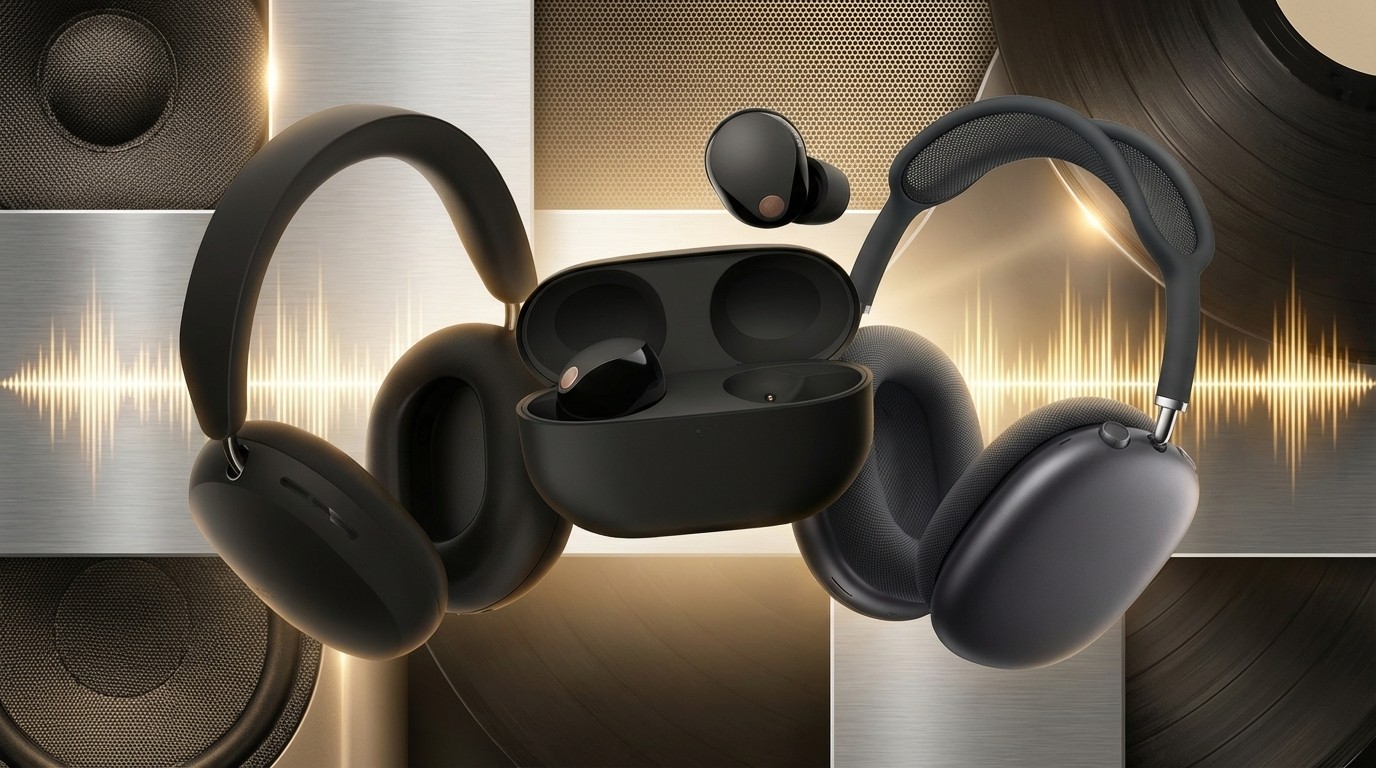Best audiophile headphones 2025: 9 best-sounding luxury pairs for music fans
Performance-first headphones and earbuds for discerning music lovers

Sound quality first, convenience and features second: that's the priority order of audiophile headphones.
If you are looking for the very best-performing headphones you can buy for your budget, you're in the right place. While many premium-priced headphones nowadays share their performance priorities with high-tech bells and whistles like Bluetooth, active noise cancellation (ANC) and spatial audio, the best audiophile headphones below promote outstanding sonics above anything else.
That's why they are predominantly wired headphones and earbuds, which inherently prioritise maximum sound for your pound (or dollar) over 'surplus' modern-day conveniences such as wire-free, noise-blocking listening.
These sophisticated headphones deserve to be connected to an equally mature source – a portable music player, a phone or laptop via an external DAC, or straight into a hi-fi system's dedicated headphone amplifier or other component. A phone or another everyday device simply won't do justice to even the most affordable pair in this list, the Beyerdynamic DT 700 Pro X.
Our in-house team of expert reviewers have rigorously tested audiophile headphones in their hundreds over the decades, and here have handpicked the class-leading performers across a wide range of prices. They are not necessarily prohibitively expensive; great-value sound worthy of the 'audiophile' label does indeed exist.
The quick list
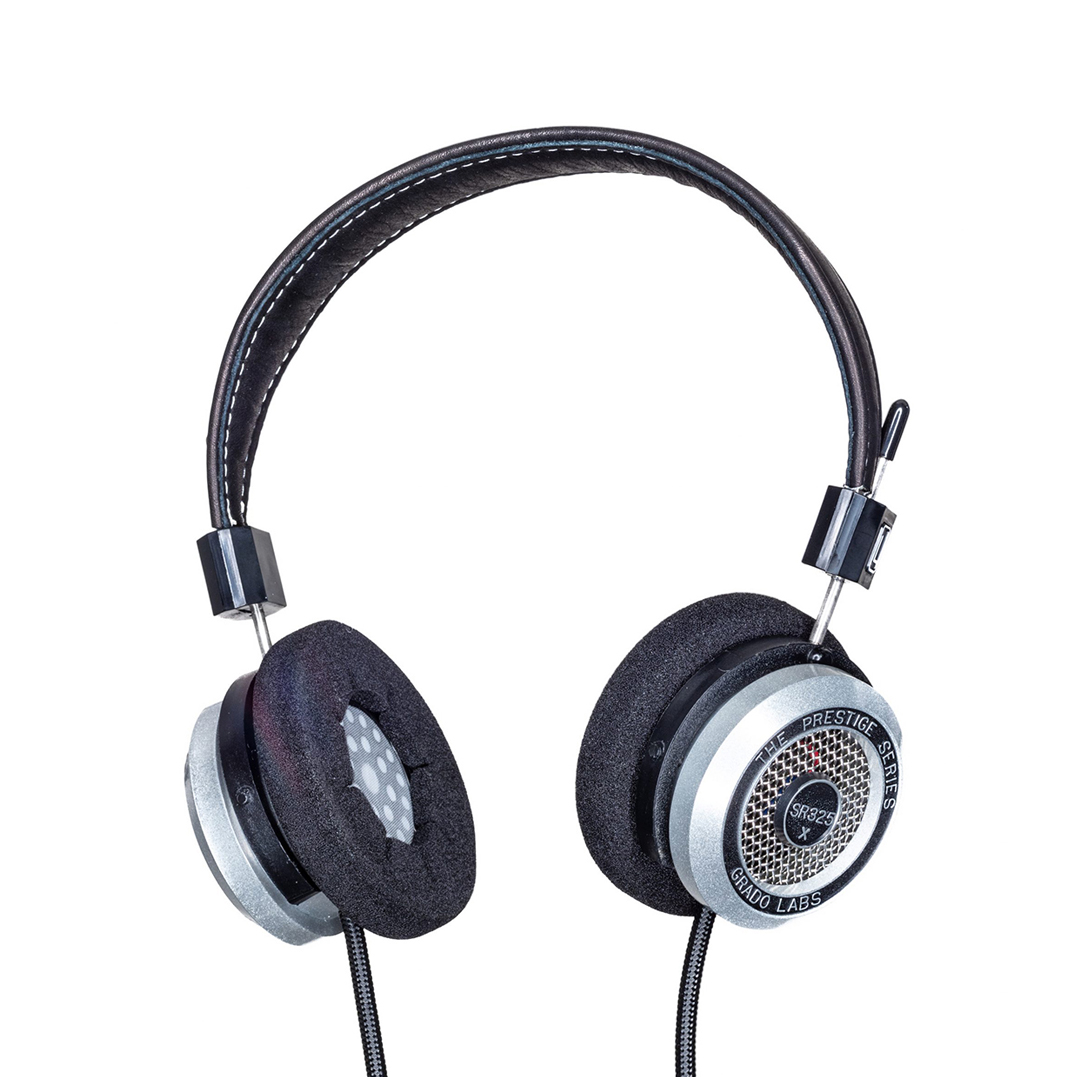
These open-backed home headphones remain the best-value options for your typical audiophile.
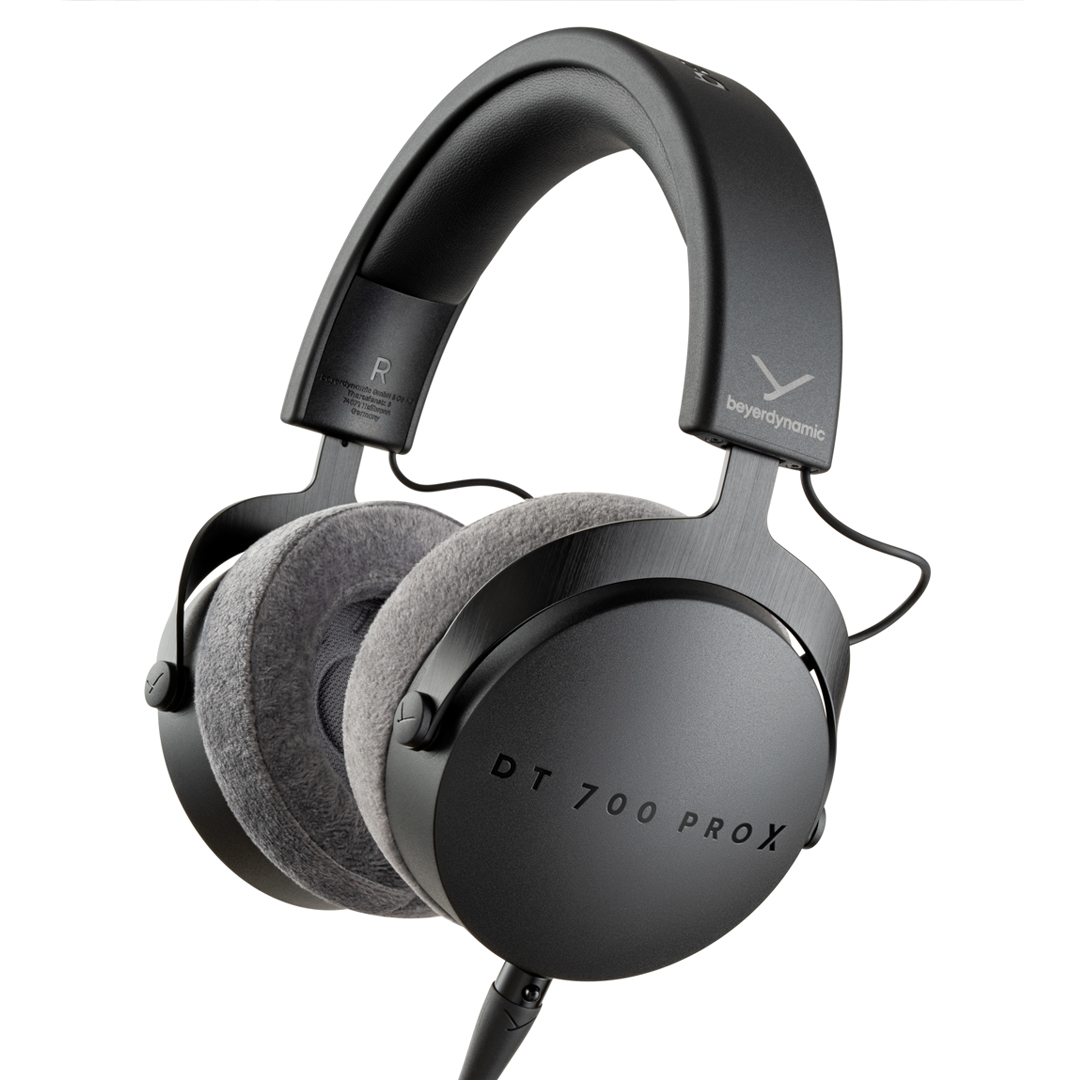
Marketed for studio use but just as good at home, these closed-back over-ears are as musical as they are informative.
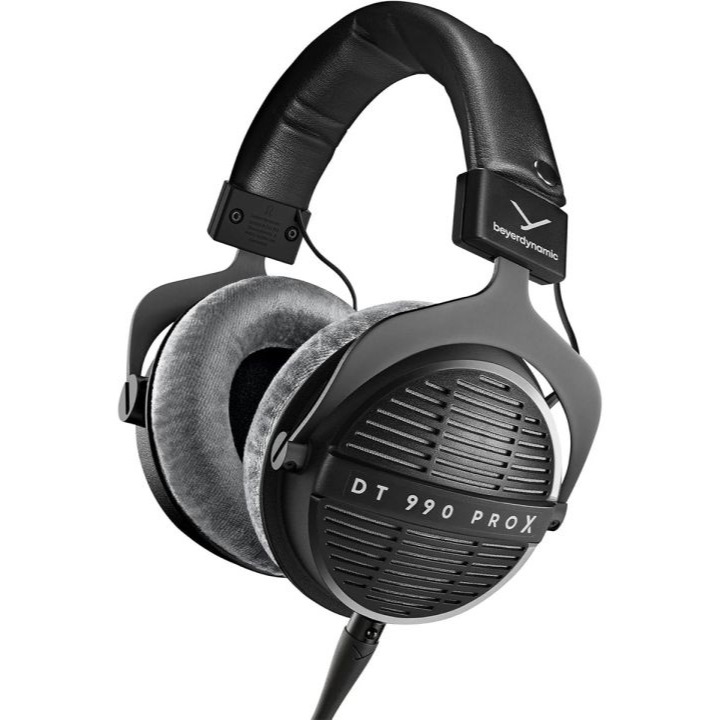
Supremely wearable over-ears that offer all-day comfort and a sound that's rich with detail and dynamism.
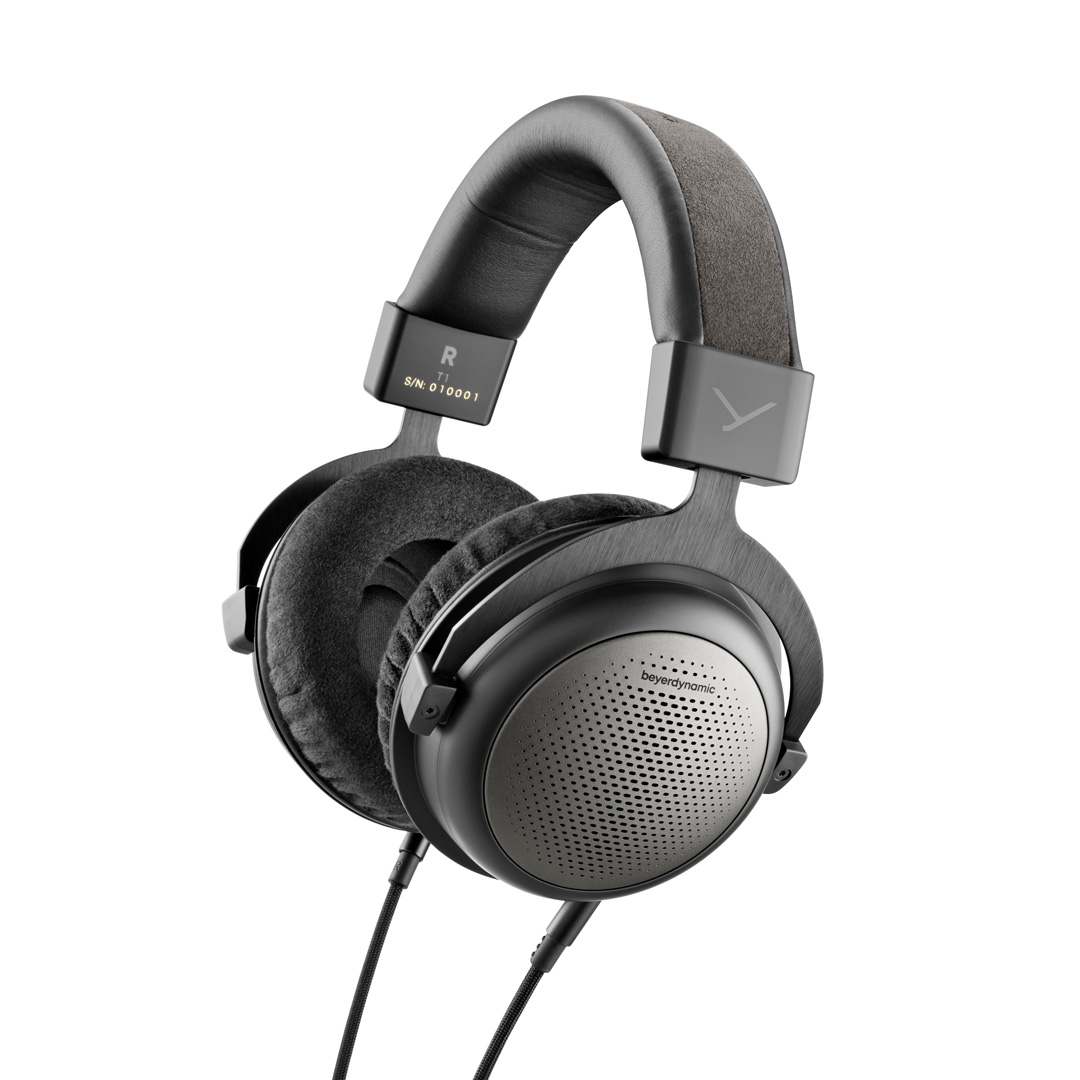
Paired with a high-quality source (or DAC), these open-back Beyerdynamics sound truly sensational.
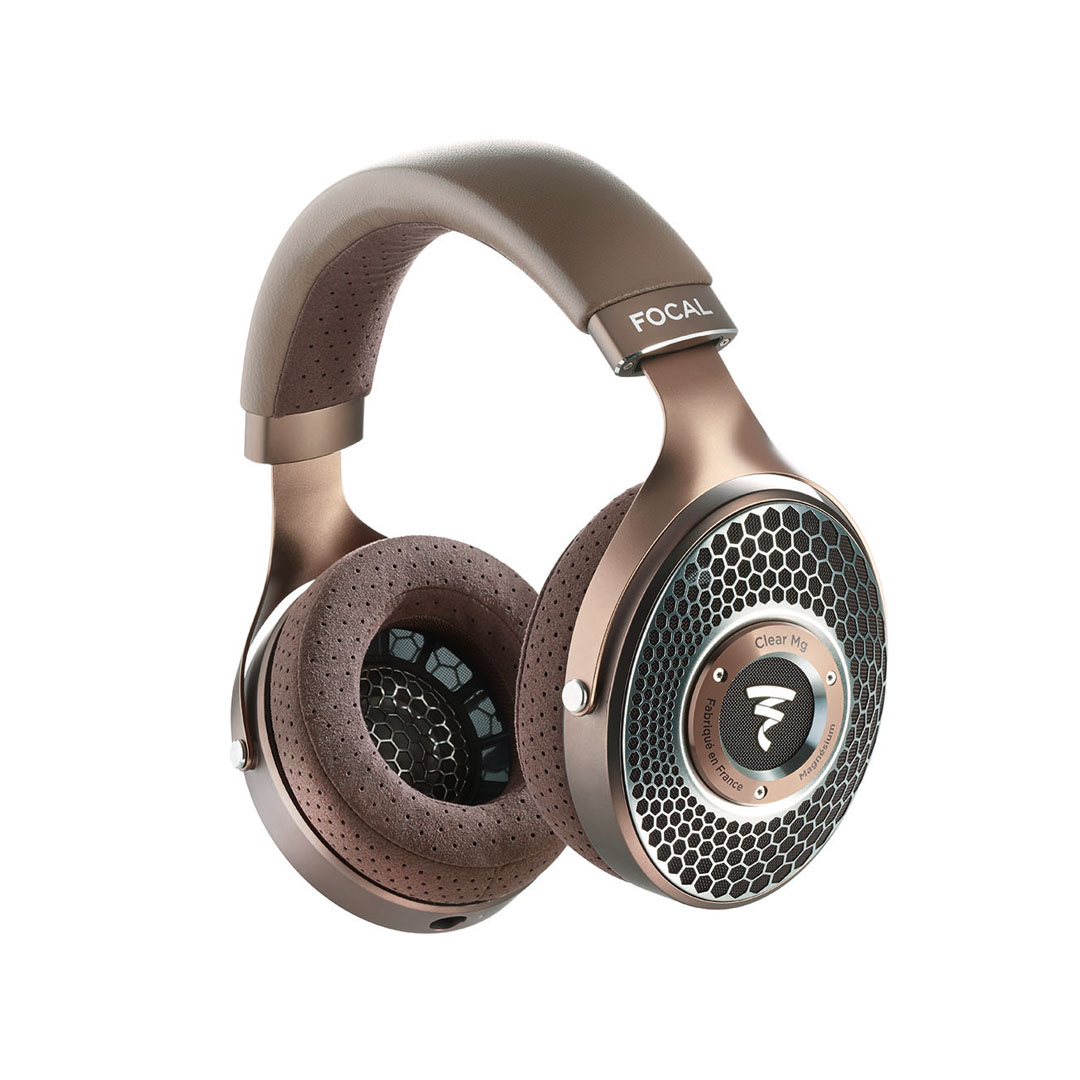
Luxurious materials, attractive aesthetics and stupendous sound make these open-back Focals worth every penny.
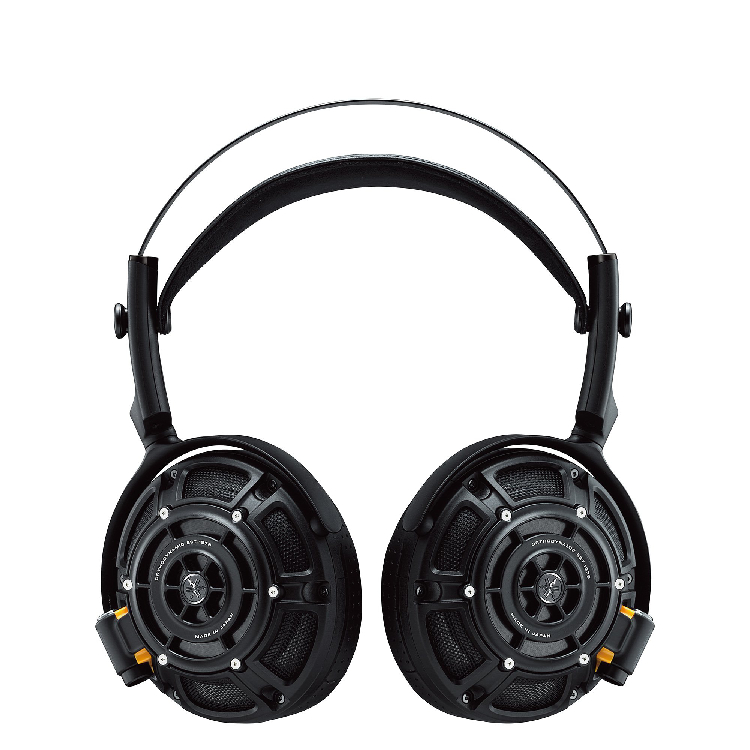
Headphones most audiophiles can only aspire to, these Yamahas are hard not to fall in love with.
Load the next three products ↓

Prefer a pair of in-ears? These sophisticated Shures are masters of musicality.
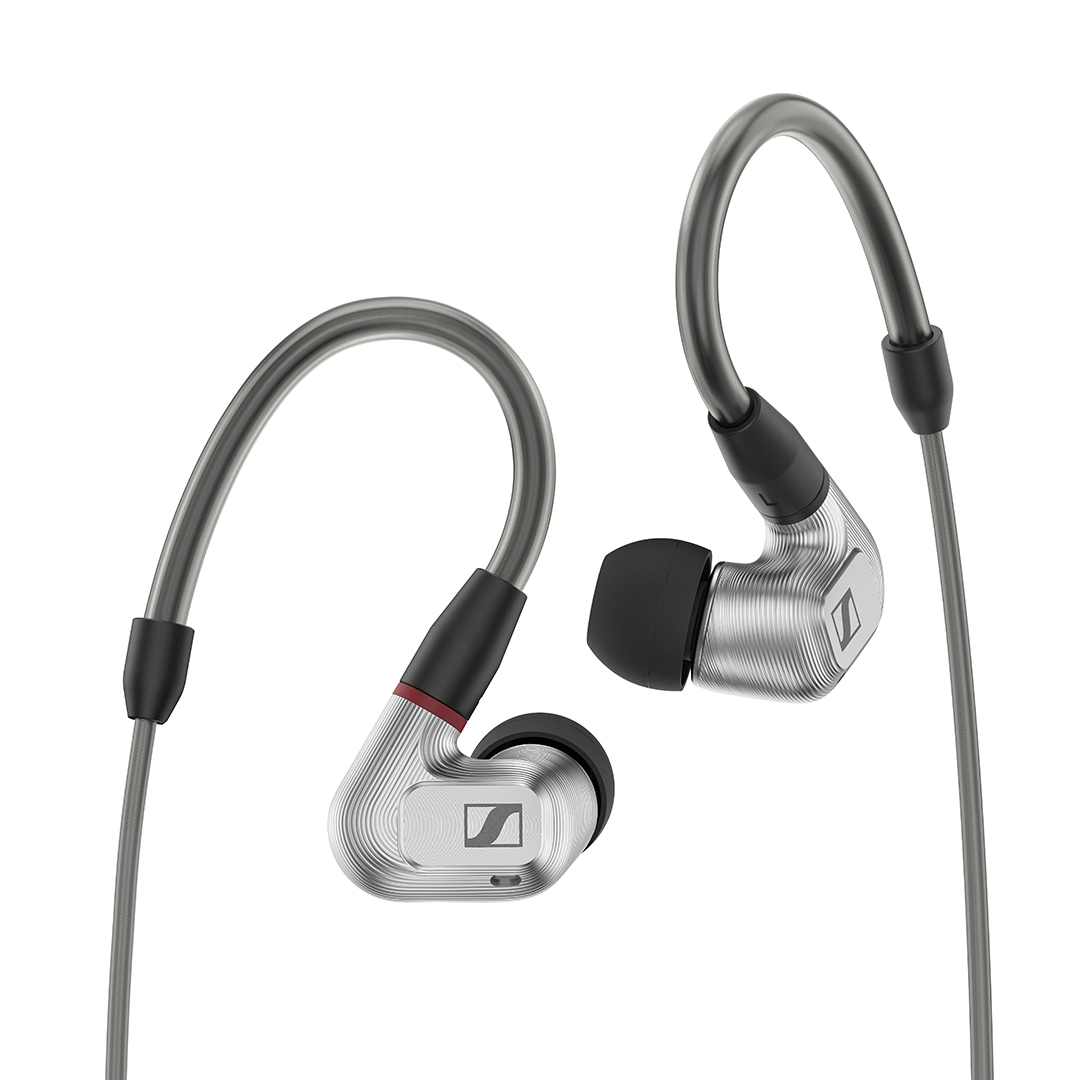
A pricey proposition, yes – but the IE 900’s build, engineering and sound quality justify the outlay.
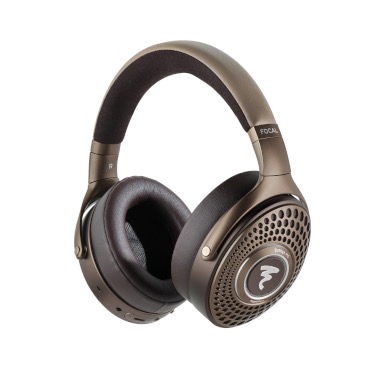
Want the convenience of cable-free listening but don't want to sacrifice sound? These Focals are some of the best wireless cans we've ever heard.
29th September: The Beyerdynamic DT 990 Pro X and Focal Bathys Mg have earned their stripes and been added to our main list.

I am What Hi-Fi?'s managing editor and have been reviewing and writing about headphones for over a decade. I'm a massive head-fi (headphones and the like) fan, and while I like wireless headphones for everyday use, nothing beats listening to music through a pair of wired, sound-first audiophile headphones. I'd argue it is often preferable to a hi-fi system! I have heard every pair below so can assure you that they represent the best value for money in their respective fields. Unsure which is right for you? Check out my how to choose advice below.
Best value audiophile headphones
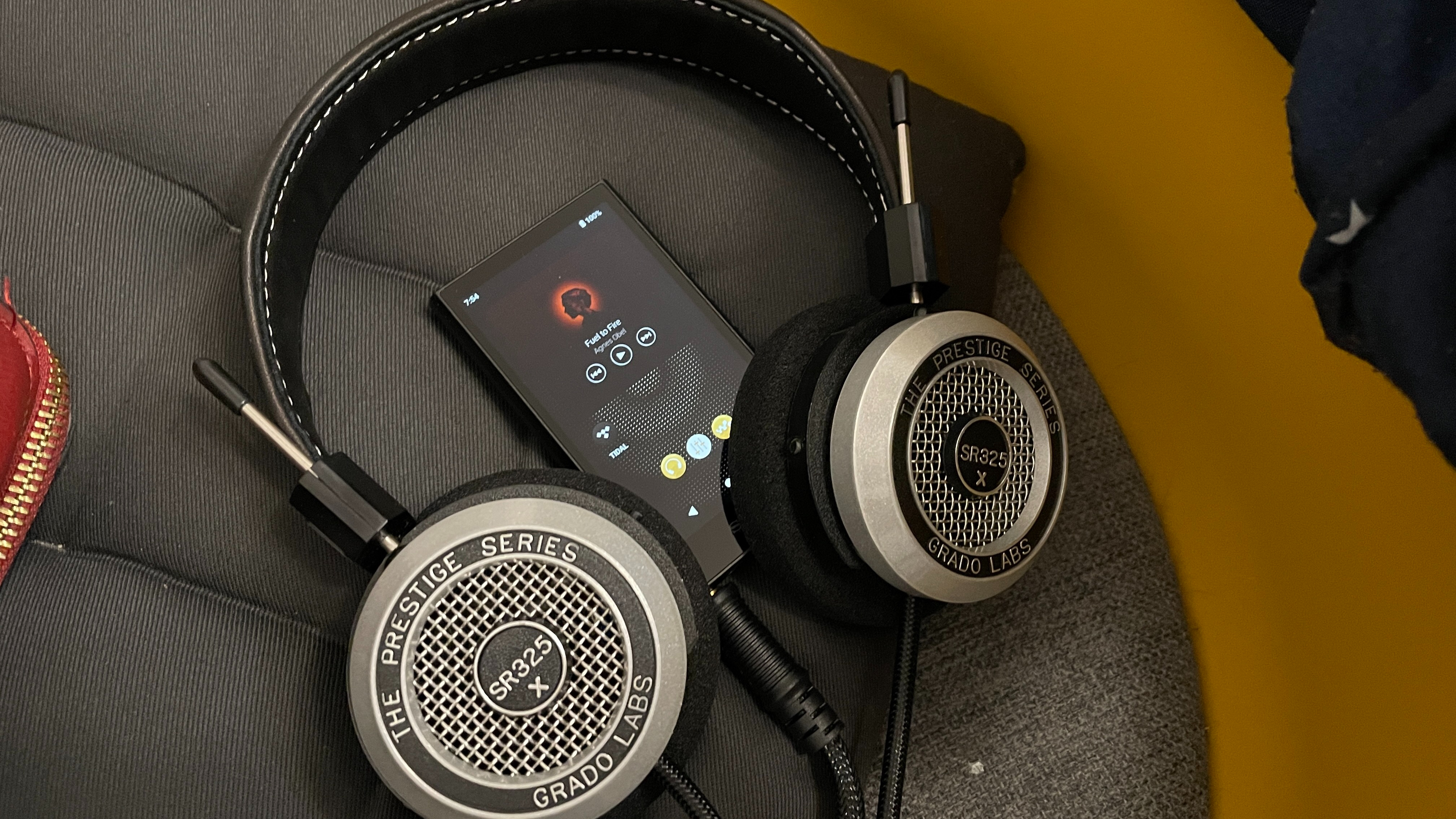
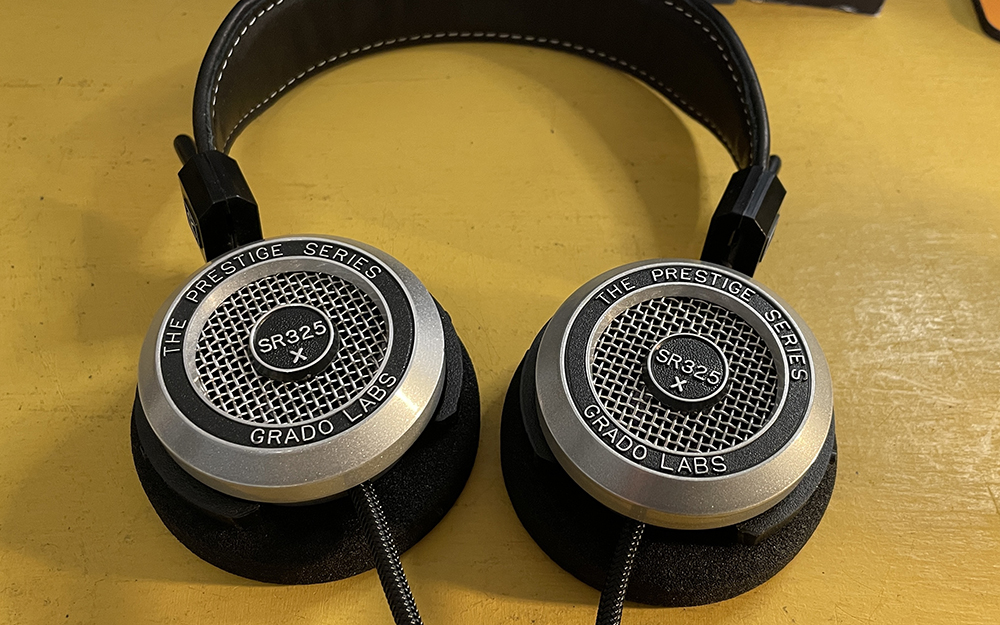
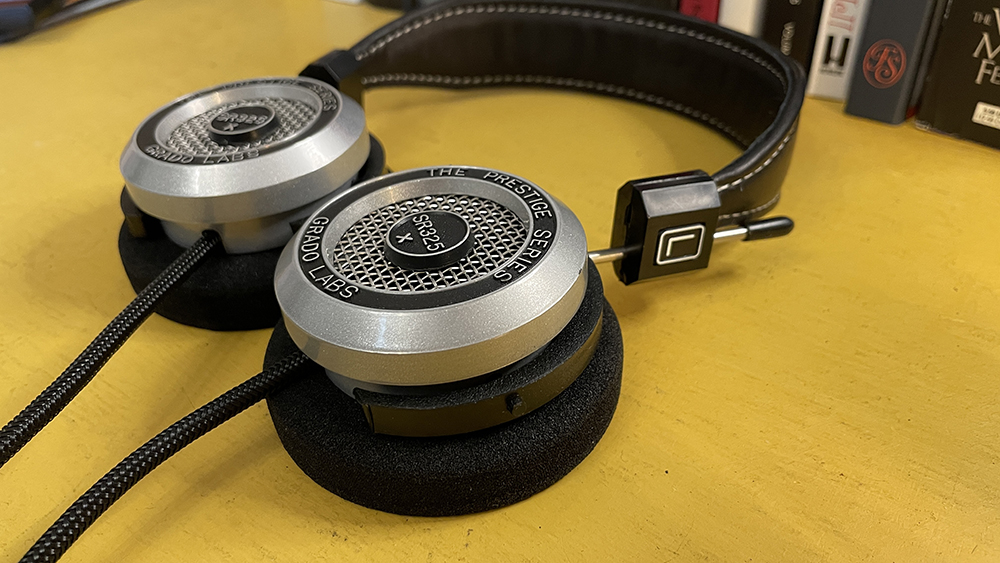
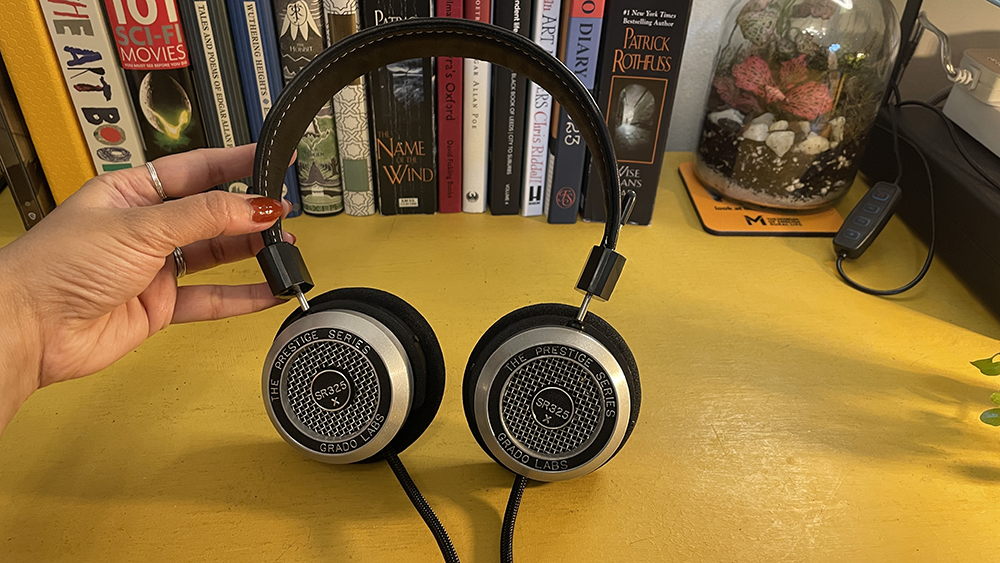
Specifications
Reasons to buy
Reasons to avoid
Say hello to the best audiophile headphones for outright value. Grado's SR325 headphone model has set the benchmark at this price point for years, and its latest SR325x are the best iteration the Brooklyn-based company has produced yet.
While they may only be a modest improvement over the previous SR325e, when you consider that those old-timers previously topped this list of best audiophile headphones for years, any improvement is an achievement in itself.
The bigger achievement is that the SR325x picked up a What Hi-Fi? Award in 2021, 2022 and 2023 for being the most impressive sounding pair at their price. Indeed, nothing has beaten them since they arrived three years ago.
So, for those familiar with previous SR325 iterations, what's new here? On the surface, not much; there are flatter foam earpads, an updated cable and lighter-coloured stitching on the firmly padded headband. But the real work has gone on under the hood. The 44mm drive unit has a revised motor system, new diaphragm and upgraded coil, all to improve efficiency and reduce distortion. And the new 8-conductor cable uses 'super' annealed copper to deliver a purer sound.
The result is a smoother listen, more authoritative bass and an overall cleaner, clearer sound. "These headphones have always been detailed and articulate performers, and that hasn’t changed," our in-house reviewers note in our SR325x review, "but the ‘x’ generation sounds that bit more precise and insightful." They deliver rhythms with enthusiasm and plenty of punch, and sound effortlessly musical.
They do have an open-back design, though, meaning they leak sound in and out like a sieve and don't quite have the outright weight and low-end punch of closed headphone designs. If you don't mind that because you're after a pair primarily for private listening in a quiet room in your home, and don't require oodles of bass, you'll be rewarded.
Our experts advise pairing the Grados with "an outboard DAC of the quality of Chord’s Mojo for the laptop and phone, and at least Astell & Kern’s A&norma SR25 music player" if you want to hear the scale of the SR325x’s talents.
Got a smaller budget? The next-model-down Grado SR80x are equally impressive for their lower price level, while the Beyerdynamic DT 900 Pro X (open-backs) and DT 700 Pro X (closed-backs, below) are worthy alternatives for those who don't dig Grado's retro vibe.
Read our full Grado SR325x review
Best studio audiophile headphones
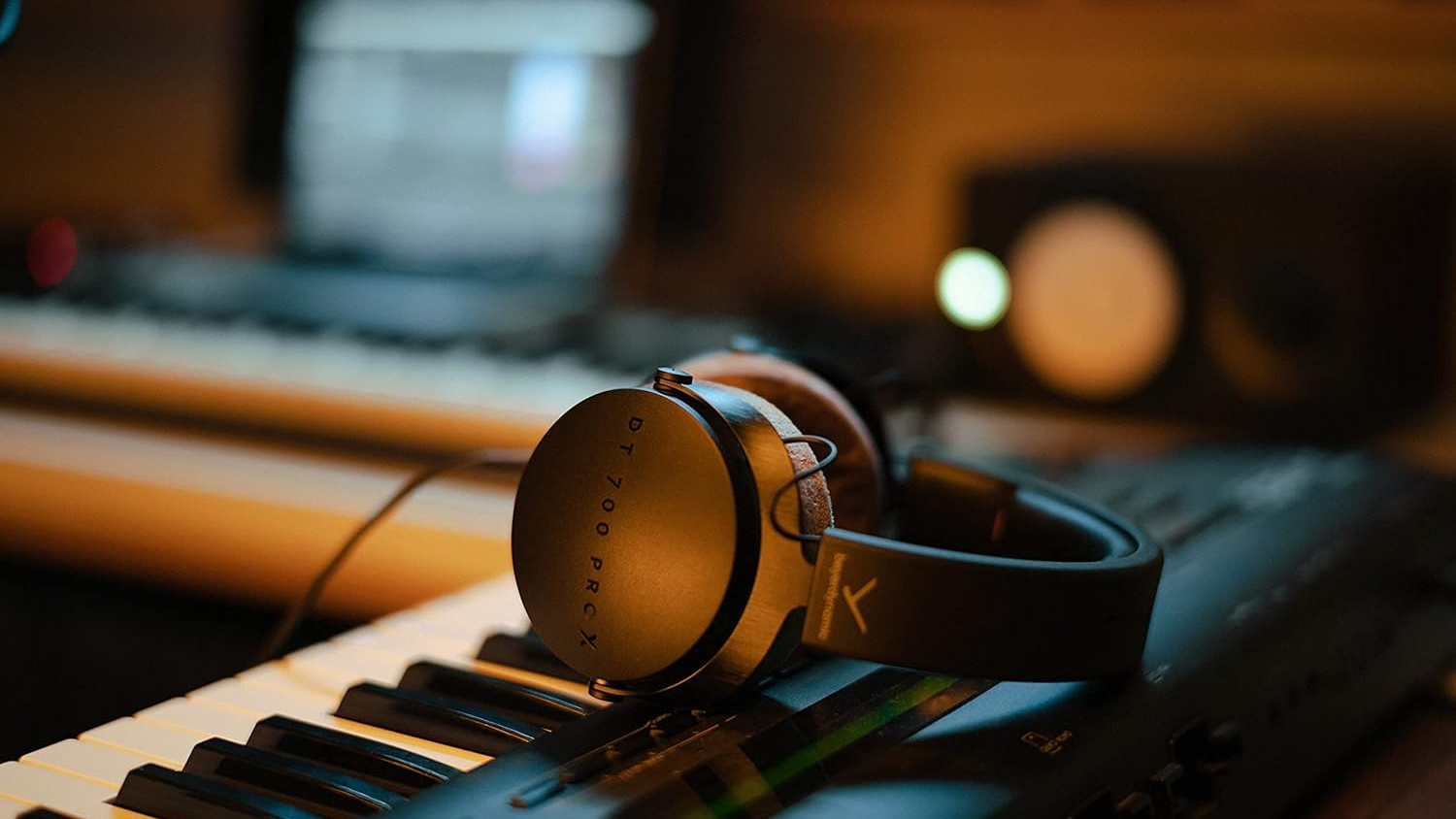
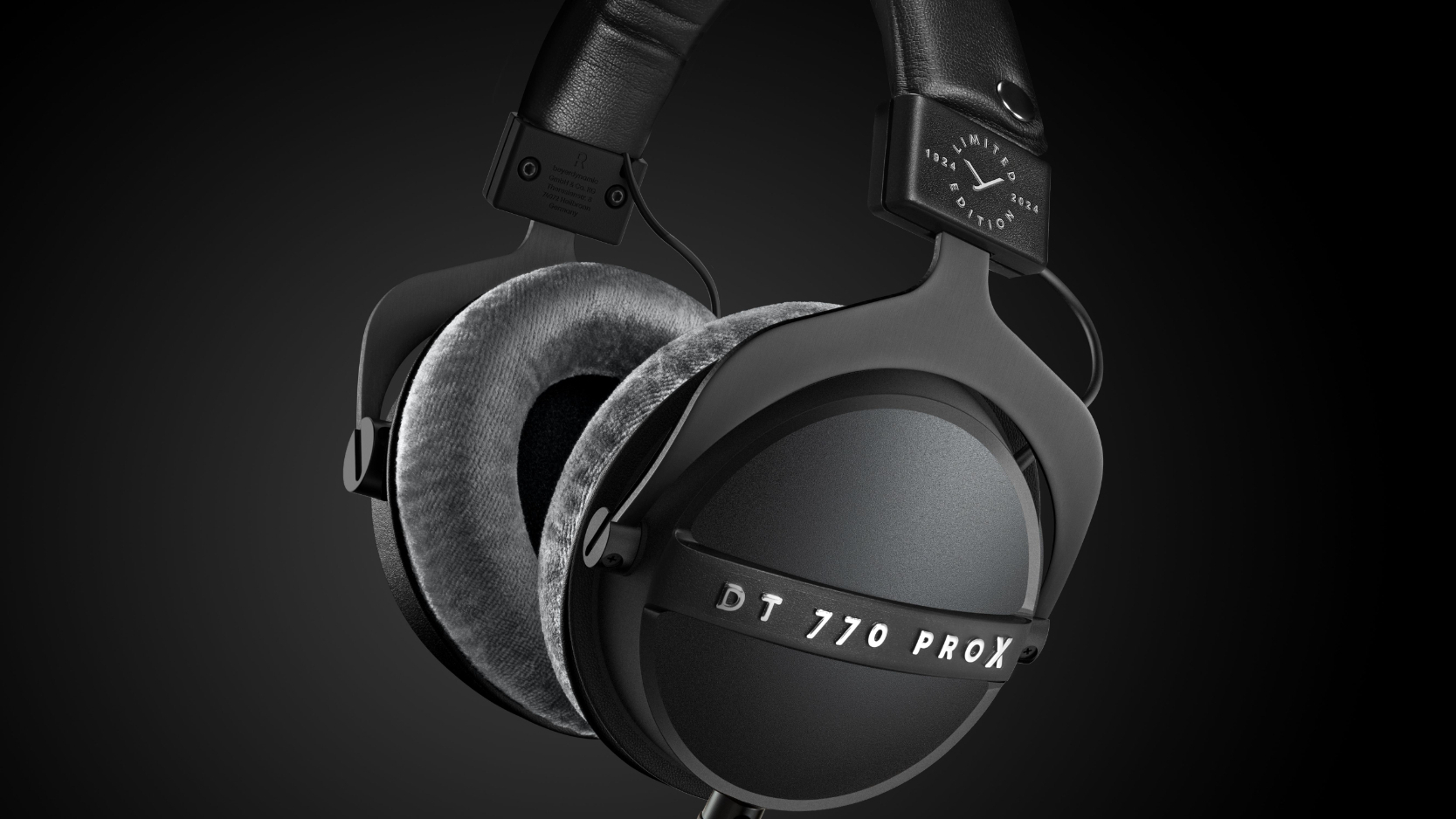
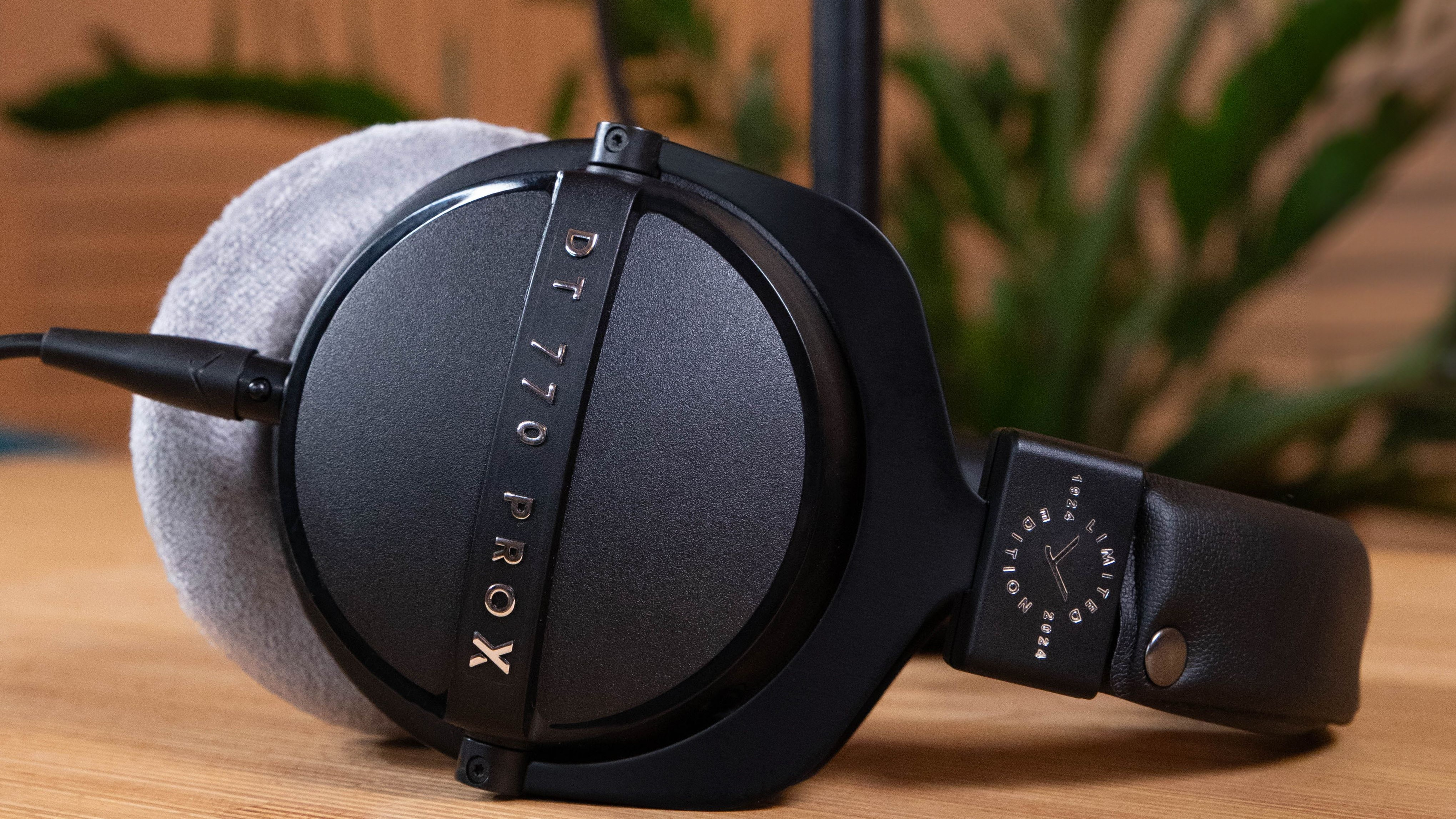
Specifications
Reasons to buy
Reasons to avoid
These closed-back headphones, like their DT 900 Pro X open-back cousins, are aimed at content creators, with Beyerdynamic labelling them as 'studio' headphones. 'Studio' or not, they have plenty to offer content consumers too. With a spacious, precise and nimble sound and comfortable, lightweight design, they are the best traditional closed-back over-ears our expert reviews team has come across at this accessible price.
At their heart is Beyerdynamic’s Stellar.45 drive unit. It’s designed and manufactured in-house and uses a layered Peek polymer diaphragm, with a damping material sandwiched in between, and a Neodymium motor system.
The aim? To deliver a detailed sound with an easy load which will allow the headphones to be driven by laptops and smartphones without any problems.
And it works! The DT 700 Pro X sound effortlessly composed – the order and precision with which instruments are presented give music a solid foundation on which the headphones can build.
"The honesty in the execution is second to none at this price and the headphones still communicate dynamic shifts of percussion, strings and wind instruments extremely effectively," reads our DT 700 Pro X review. It's not the most exciting presentation we’ve ever heard, the headphones choosing to major in careful control and subtlety instead, but they're still musical and far, far from sounding sterile and unemotional.
Add to that the lack of sound leakage inherent to their closed-back design, plus a reassuringly robust build ("the overall impression you get is that this is a pair of headphones that’s going to give you plenty of mileage over the years," note our in-house reviewers), and you're onto a winner for creators and consumers alike.
Read our full Beyerdynamic DT 700 Pro X review
Best audiophile headphones for comfort
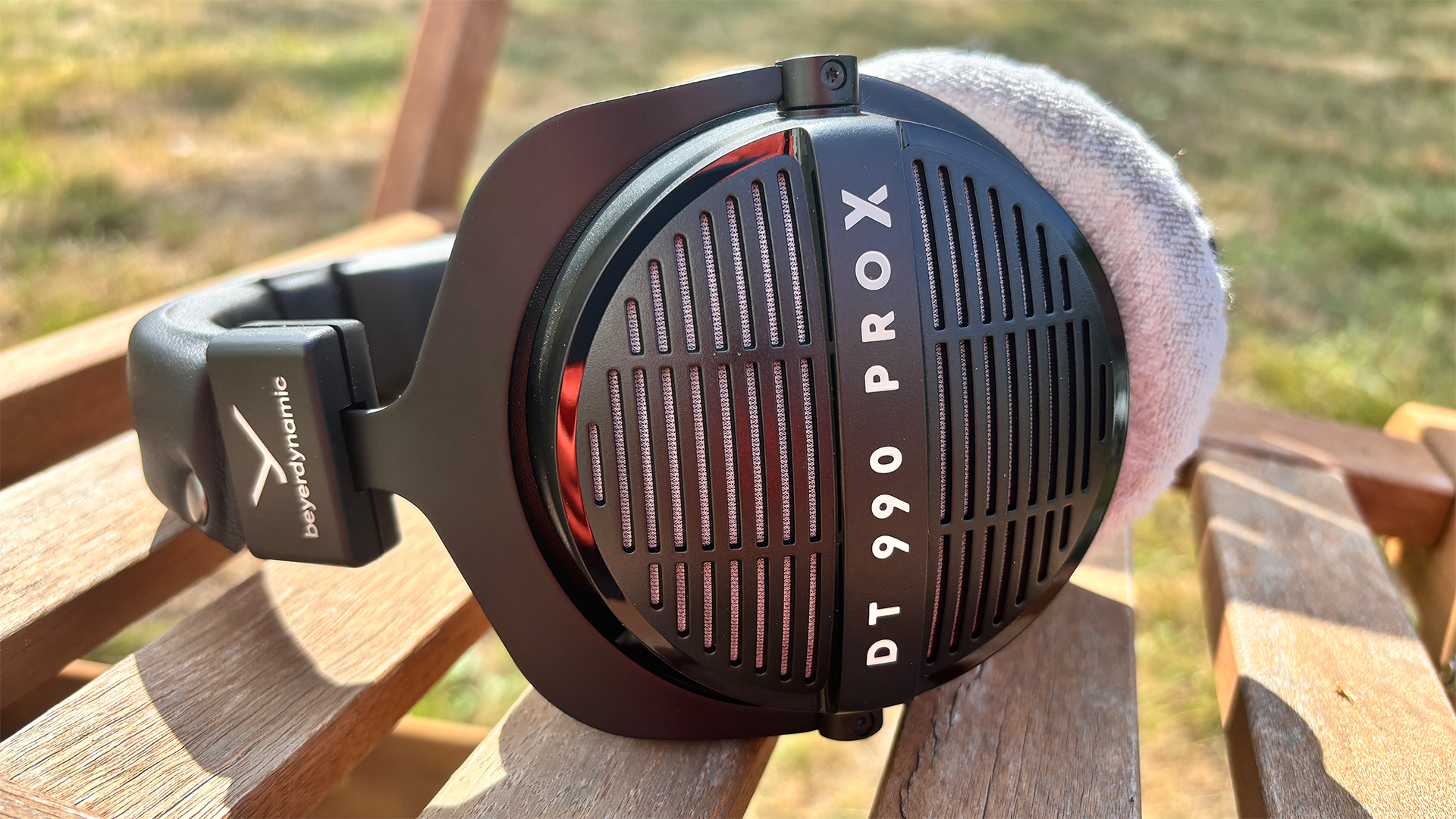
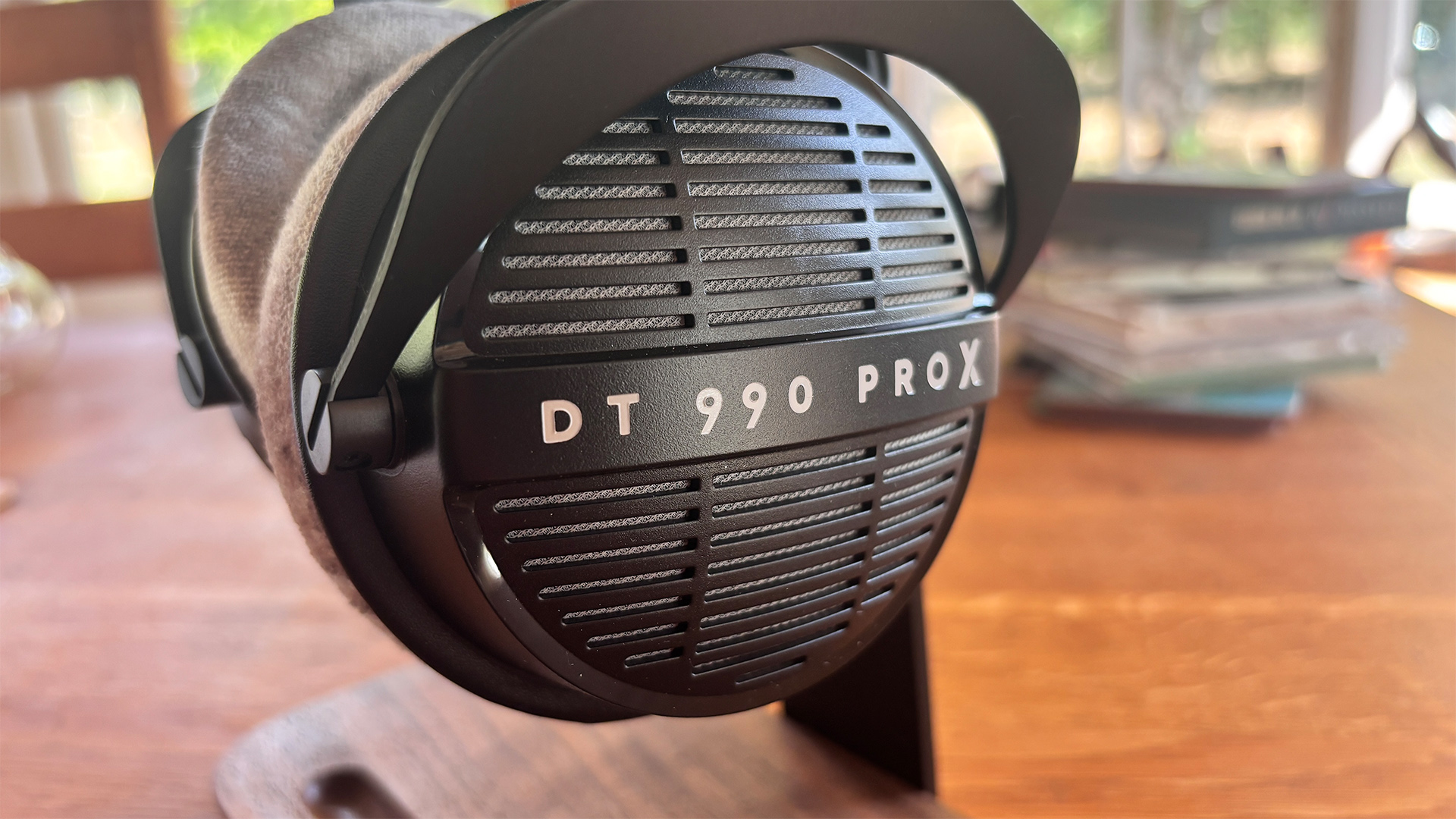
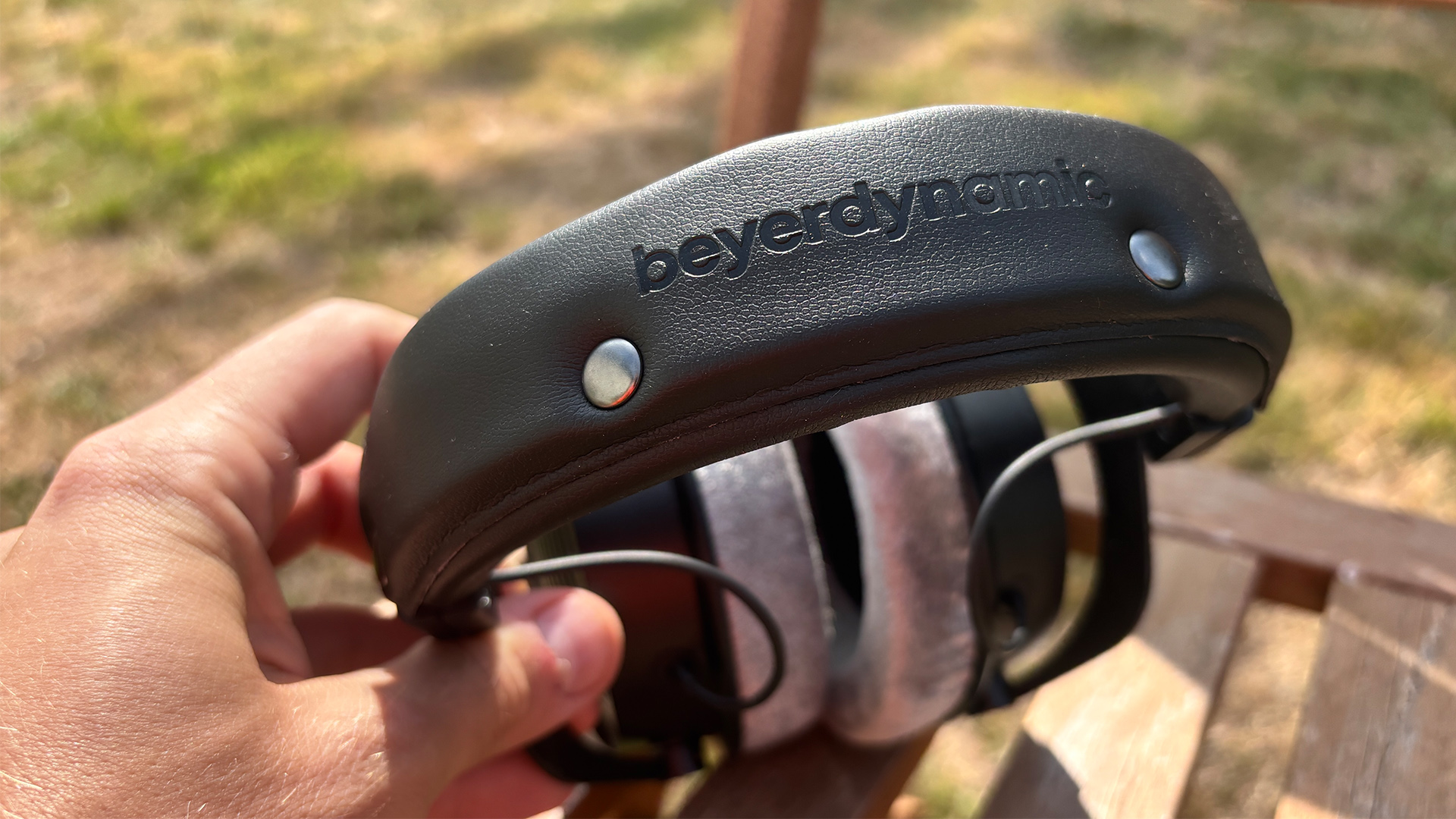
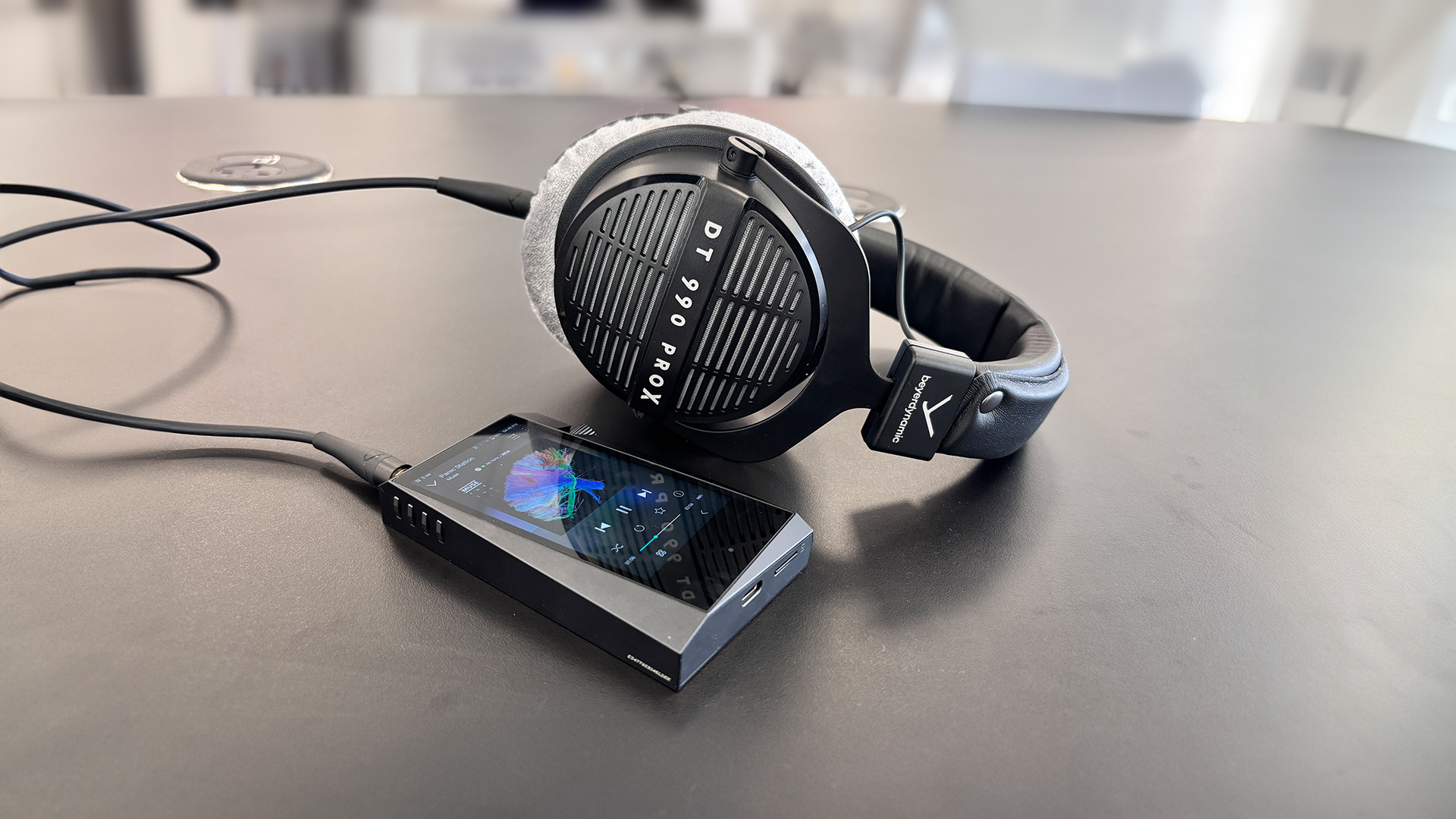
Specifications
Reasons to buy
Reasons to avoid
A pair of wired headphones that blend exceptional comfort with outstanding audio quality? Wouldn't that be something...
The Beyerdynamic DT 990 Pro X replace Beyerdynamic Amiron has our pick of the most comfortable cans around, carrying on from the outgoing DT 900 Pro X as an outstanding pair of headphones for long sessions of listening both at home and in the studio.
They're just so supremely comfortable, with Beyerdynamic's near-iconic velour earcups providing outstanding comfort and softness while avoiding the production of on-ear heat during extended listening stints.
Note, of course, that these are open-backed headphones, meaning sound leaks freely to the potential irritation of anyone nearby.
Thanks to their signature Stellar.45 drivers employing Beyerdynamic's layered Polyether Ether Ketone (‘PEEK’)’ thermoplastic polymer diaphragm coupled with a Neodymium motor system, the DT 990 Pro X live up to the sonic legacy of their forebears in quite some style.
However you judge them, the five-star cans excel. Beyerdynamic claims the DT 990 Pro X act as a “sonic magnifier” to your music, and while they won't shy away from poor recordings or certain sonic oddities or quirks, they rarely actively highlight or over-egg the faults in the tunes we feed them.
They're remarkably detailed headphones, with exceptional resolution paired with far more clarity and openness than found on the outgoing DT 900 Pro X. No matter the source devices or the files they're tasked with tackling, Beyerdynamic's mid-range headphones barely show any signs of struggling.
Instead, they're an engaging, rich and informative listen. The DT 990 Pro X handle dynamics superbly as they tease out low-level variations with ease, and as we said in our review, they're "composed, clear and precise, but they don’t fall into the trap of sounding emotionally distant or unengaging".
Comfort and sonic class in one excellent package, the DT 990 Pro X are a stunning blend of convenience and performance. Truly impressive.
Read our full Beyerdynamic DT 990 Pro X review
Best premium audiophile headphones
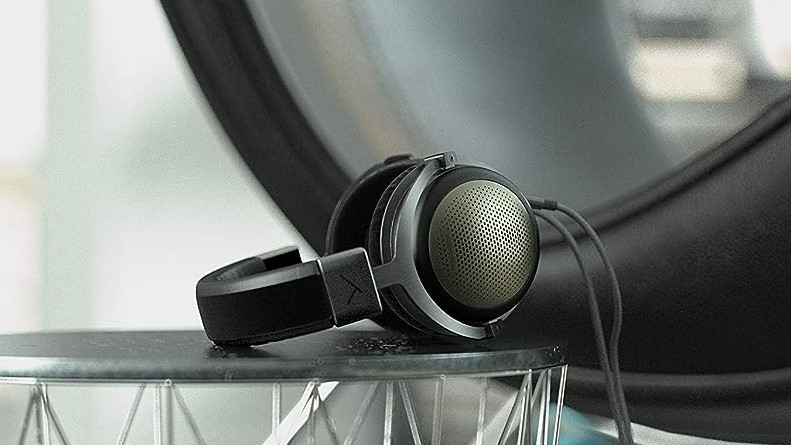
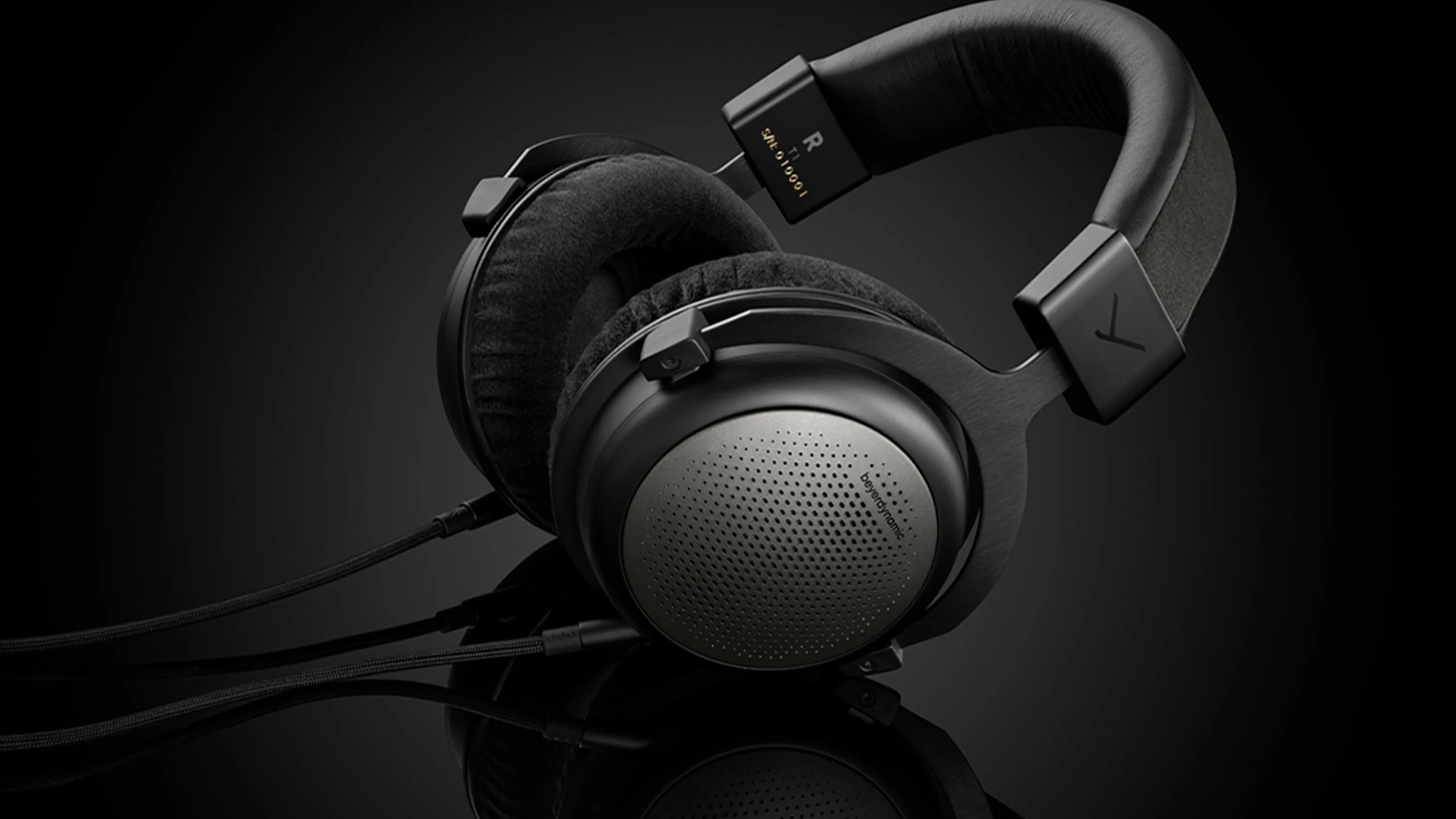
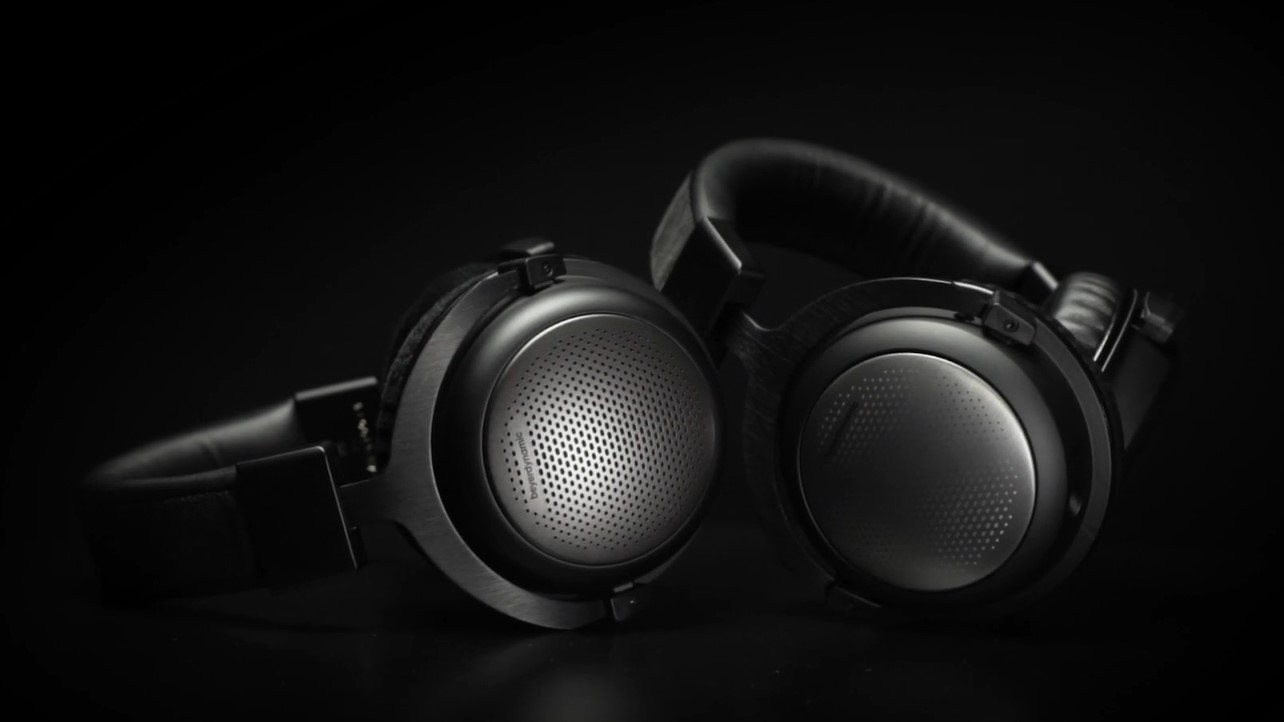
Specifications
Reasons to buy
Reasons to avoid
It’s been over a decade since we first laid ears on the original T1 model, and they have since become something of a touchstone for us as far as premium audiophile headphones go. In those years the model has reached its third generation, and it mainly separates itself from its predecessor by being easier to drive for laptops and mobile devices (The old model had a 600 ohm impedance, while this new one takes that down to 32 ohms). That said, be under no illusions – high-quality source material is still vital to make the most of their undeniable talents.
They're open-backed, so the usual provisos about leaking sound apply (try their Beyerdynamic T5 siblings if you'd prefer talented closed-backs instead). Indeed, they're intended for home listening, which is aided by the provision of a 3m cable. Incidentally, the cable is easily detachable, so if it ever does break or get damaged, swapping to a replacement will take a matter of seconds. Oh and it doesn't make much mechanical noise as you move around – always a plus.
A nicely shaped, partially Alcantara-covered headband and generous velour-trimmed earpads that don't overheat ears in a hurry make them suitable for longer listening sessions, too.
Sound-wise, the T1 3rd Gen don’t let the lineage down. They're a little cleaner and clearer than their predecessors, sounding a bit less bright and more rounded in the treble. It makes them more forgiving of aggressive electronics and recordings, but they're still admirably even-handed and balanced. As our T1 (3rd Generation) review notes, "We’re pleased to report that Beyerdynamic hasn’t over-egged the bass frequencies either, with the T1 (3rd Gen) sounding as tonally convincing as ever."
What impresses us most is how utterly faithful they are to the recording – vocals come through with particularly wonderful nuance and clarity – and their renditions of even denser music are exceptionally organised and coherent.
For around the same price, you might also want to consider the Grado RS1x, but their more retro aesthetic might put some people off.
Read our full Beyerdynamic T1 (3rd Generation) review
Best luxury audiophile headphones
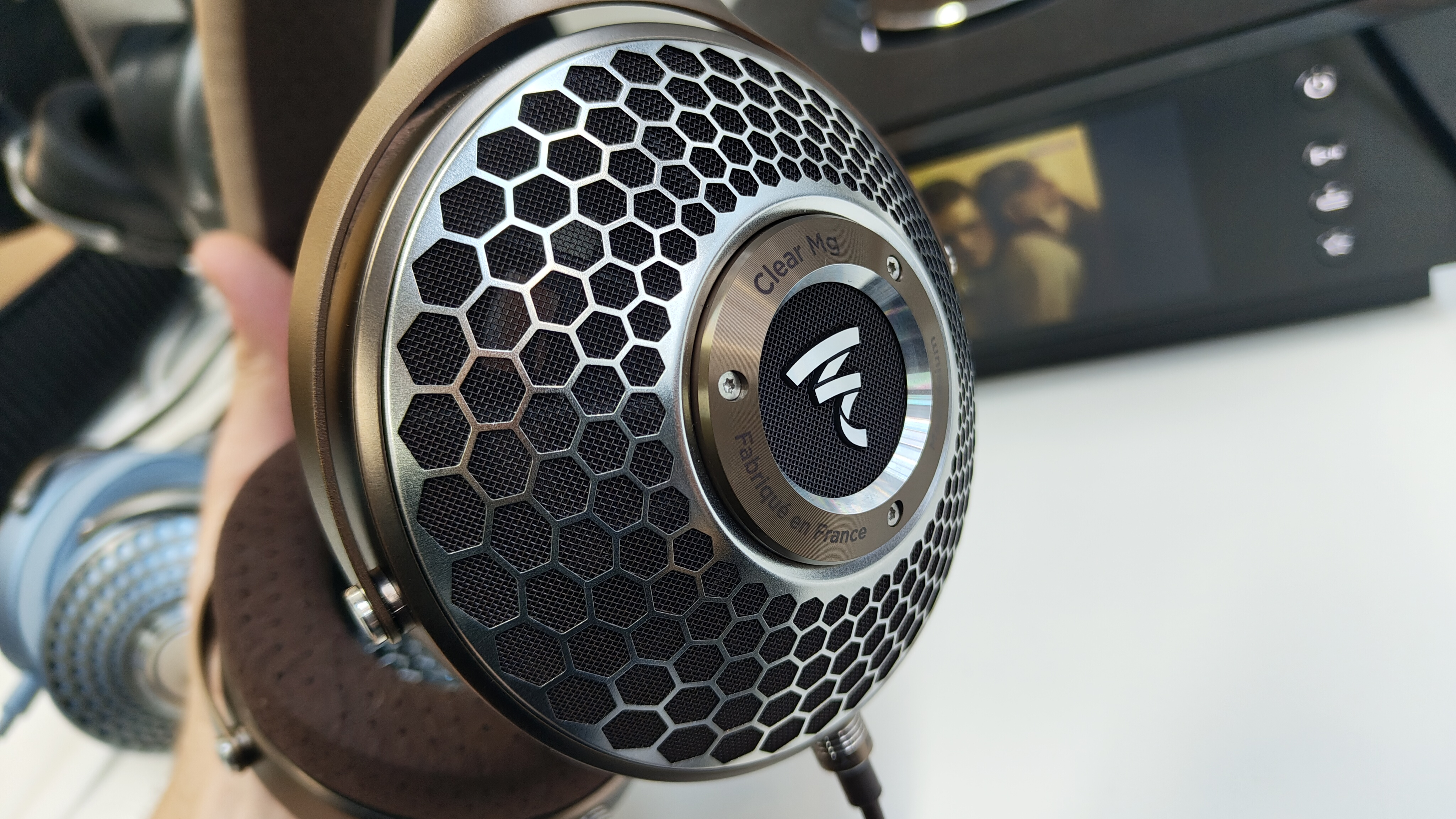
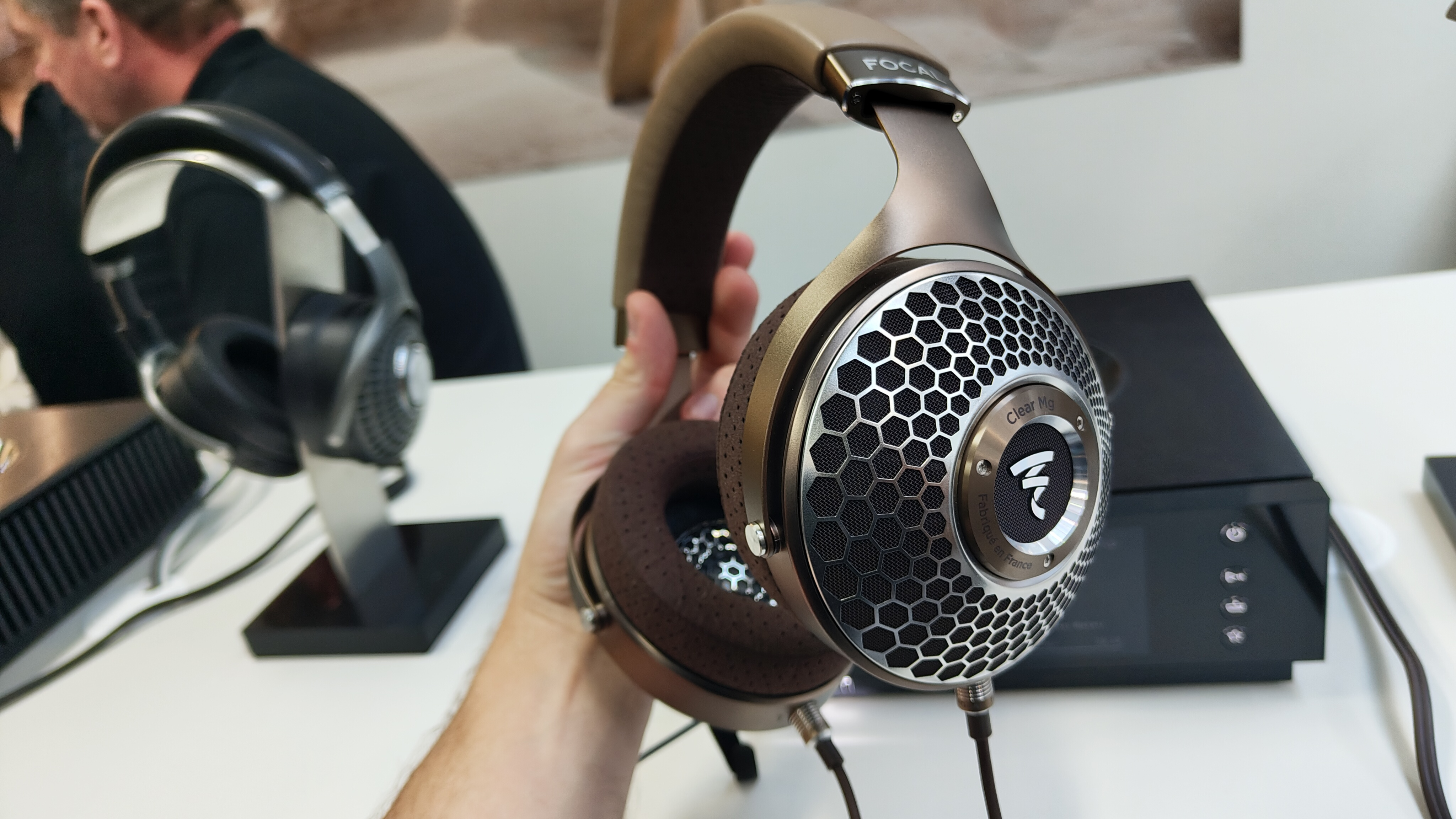
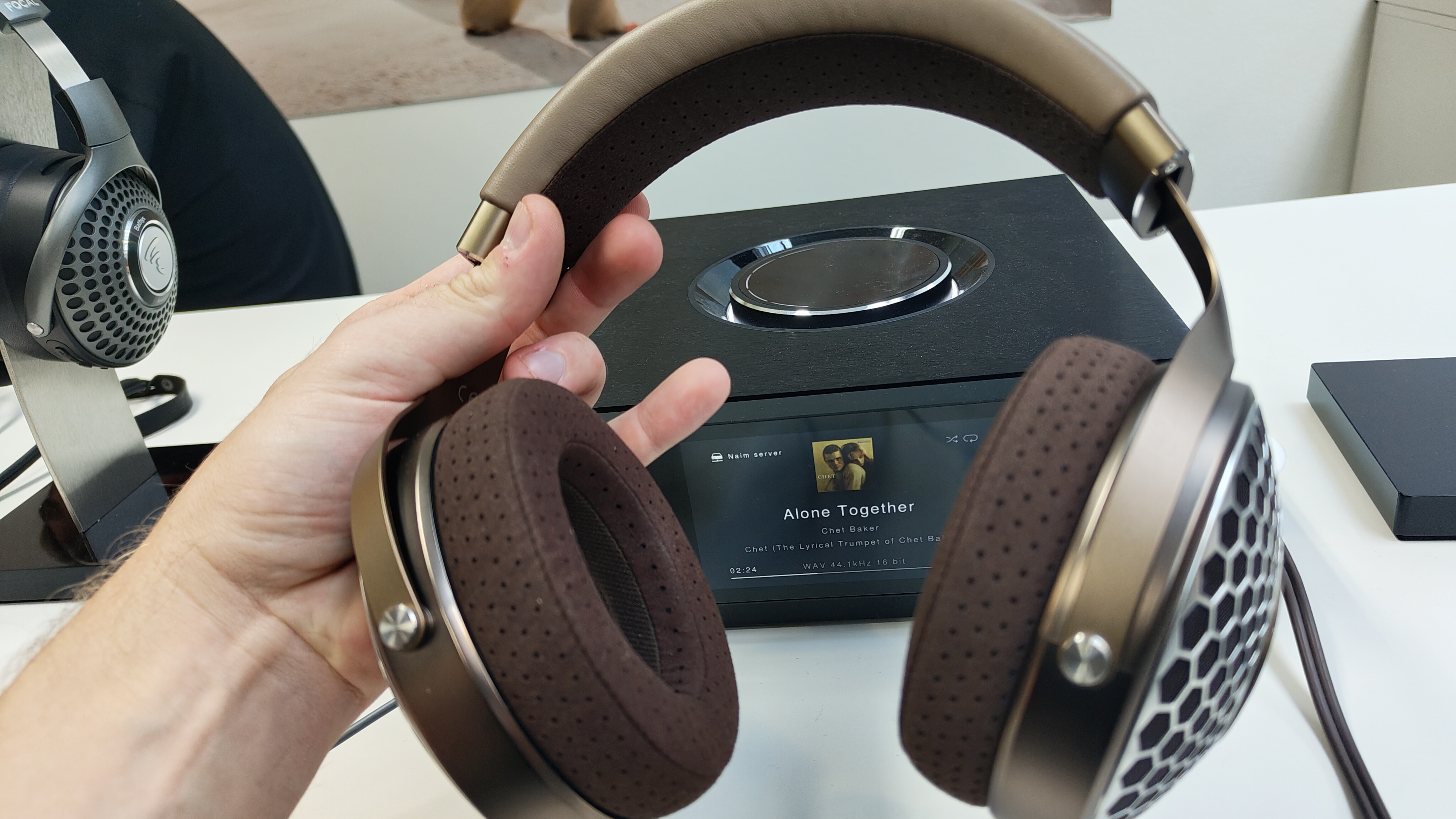
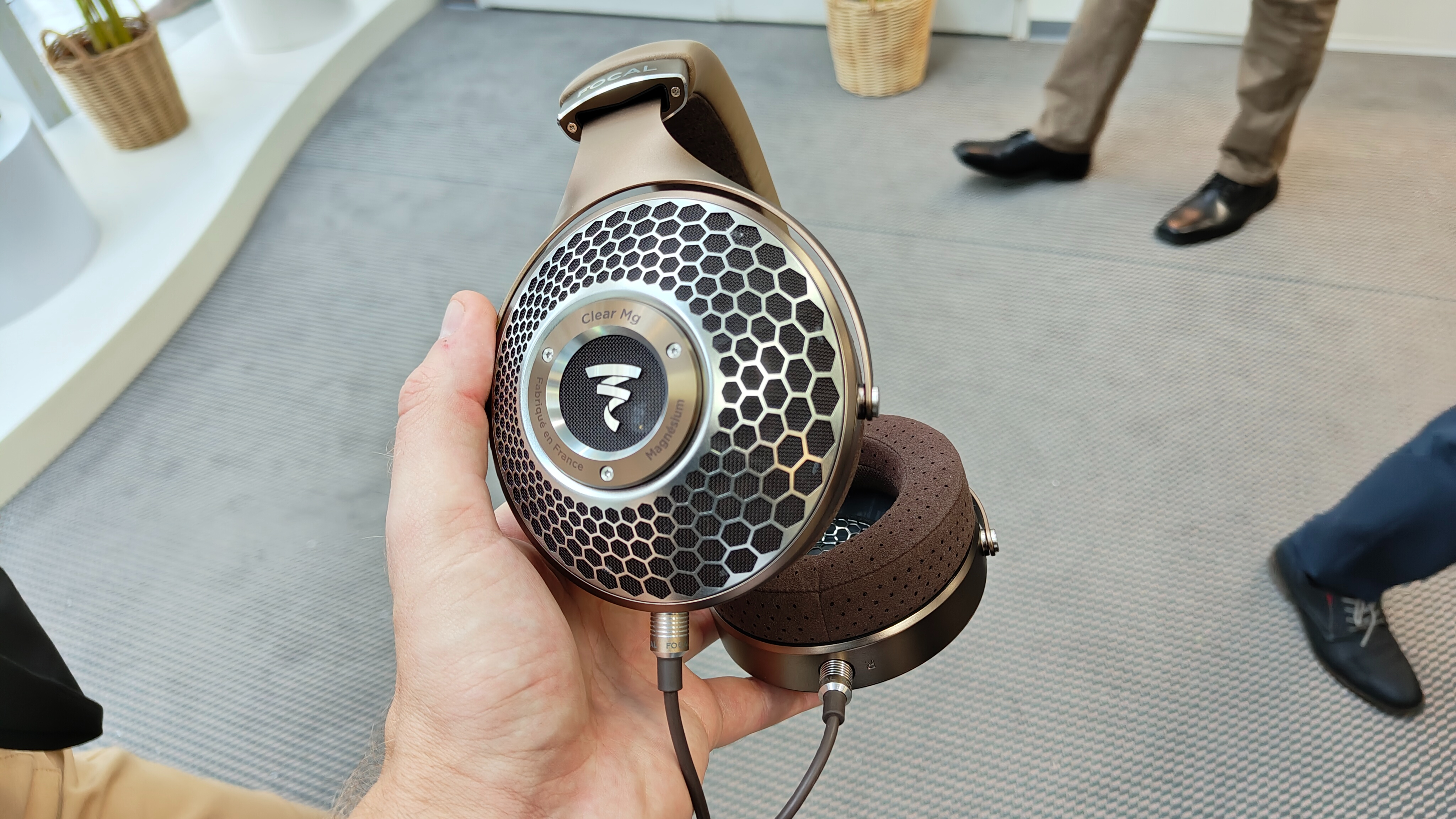
Specifications
Reasons to buy
Reasons to avoid
Focal made its name with loudspeakers, but the French company is now equally admired for its headphones – and the Clear Mg are some of its finest.
Before you even open the box it’s clear that these are high-end audiophile headphones. The packaging is suitably luxurious and there’s no denying the high-quality materials and standard of build, with the appearance certainly a far cry from many of its comparatively drab-looking competitors. A carry case and two detachable cables are included (1.2m 3.5mm and 3m 4-pin XLR), but for the price you might expect a slightly longer 3.5mm cable in the box as well.
Stick the Focal Clear Mg on your head and they’re every bit as comfortable as you’d hope. Their 450g weight is distributed well, with the thick, leather-cushioned headband and microfibre earpads ensuring that there’s not too much inward pressure.
Like many on this list, the Clear Mg are open-backed and therefore better suited to home listening than taking out and about, but that lack of an enclosure means they excel when it comes to transparency and dynamic expression. Their presentation is expressive and entertaining, with plenty of clarity, texture and punch. You can also expect precise stereo placement, plus surefootedness and control when it comes to rhythms.
Tonally, the Clear Mg are, to quote our Clear Mg review, "full-bodied in a manner that eludes most rivals, and this presentation results in instruments and voices coming through in a more natural and engaging manner". They're convincing in all the right ways, without sounding as though they're trying too hard.
A word of advice from our in-house reviews team: "Don’t let the inclusion of a 3.5mm jack and relatively short lead tempt you into using your phone as the primary source... the Clear Mg will produce decent volume levels in most set-ups [but] you really need quality electronics to justify their expense."
If the blingy design isn’t for you, the Grado GS3000x are also worth considering if you can find some extra cash, but in performance-per-pound terms the Focals are our undisputed high-end champs.
Read the full Focal Clear Mg review

In a relatively short time, loudspeaker stalwart Focal has built itself a reputation for producing wired headphones that don't just sound fantastic but, unlike many pairs, look it too. The Clear Mg are proof of that, and you'll benefit most from their sonic luxury by pairing them with a price-suitable DAC (at least something of the Chord Mojo 2's talents), or a source of equivalent skill. Just avoid aggressive-sounding electronics, as this will only emphasise the Focals' forward nature.
Best money-no-object audiophile headphones
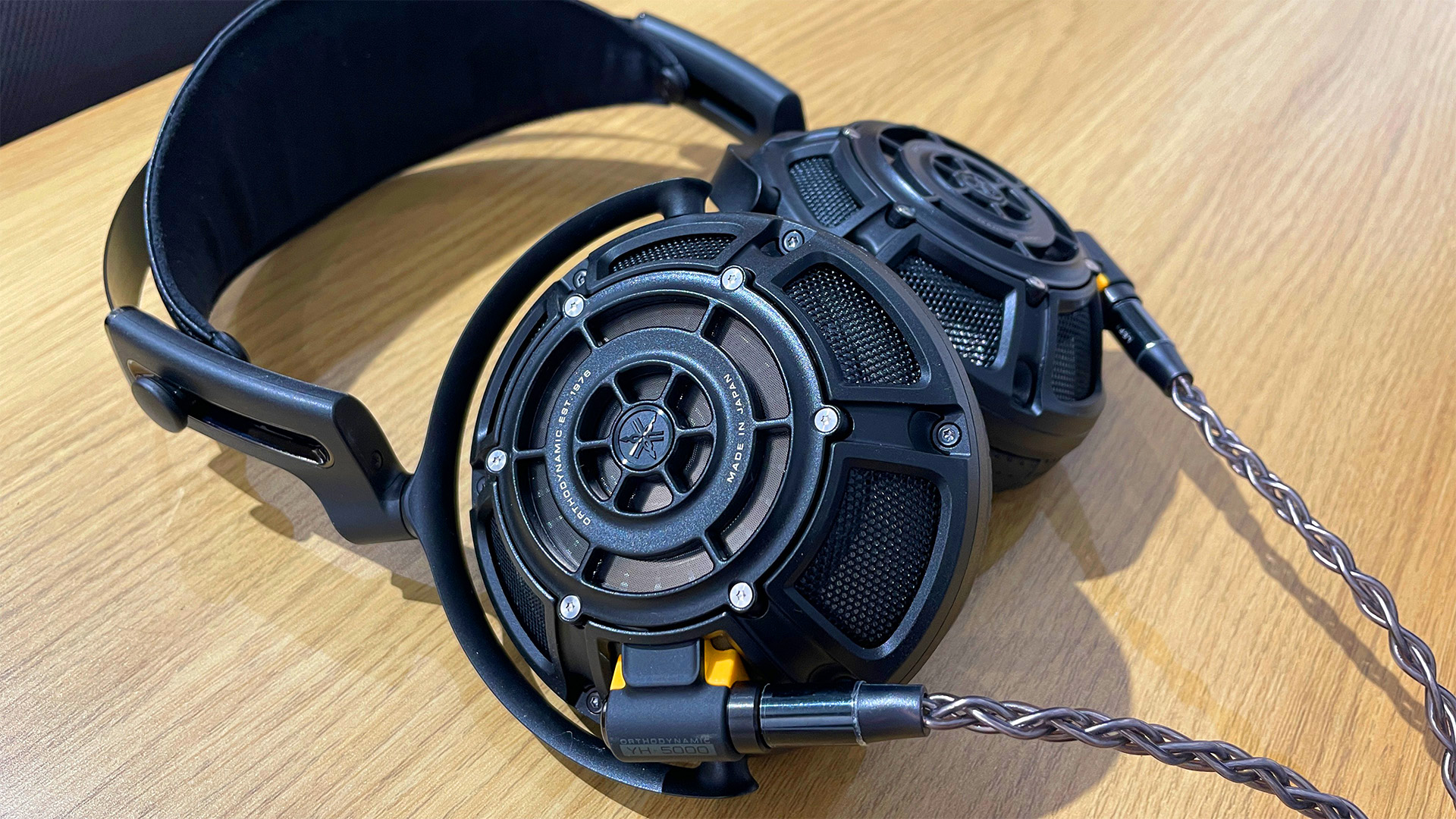
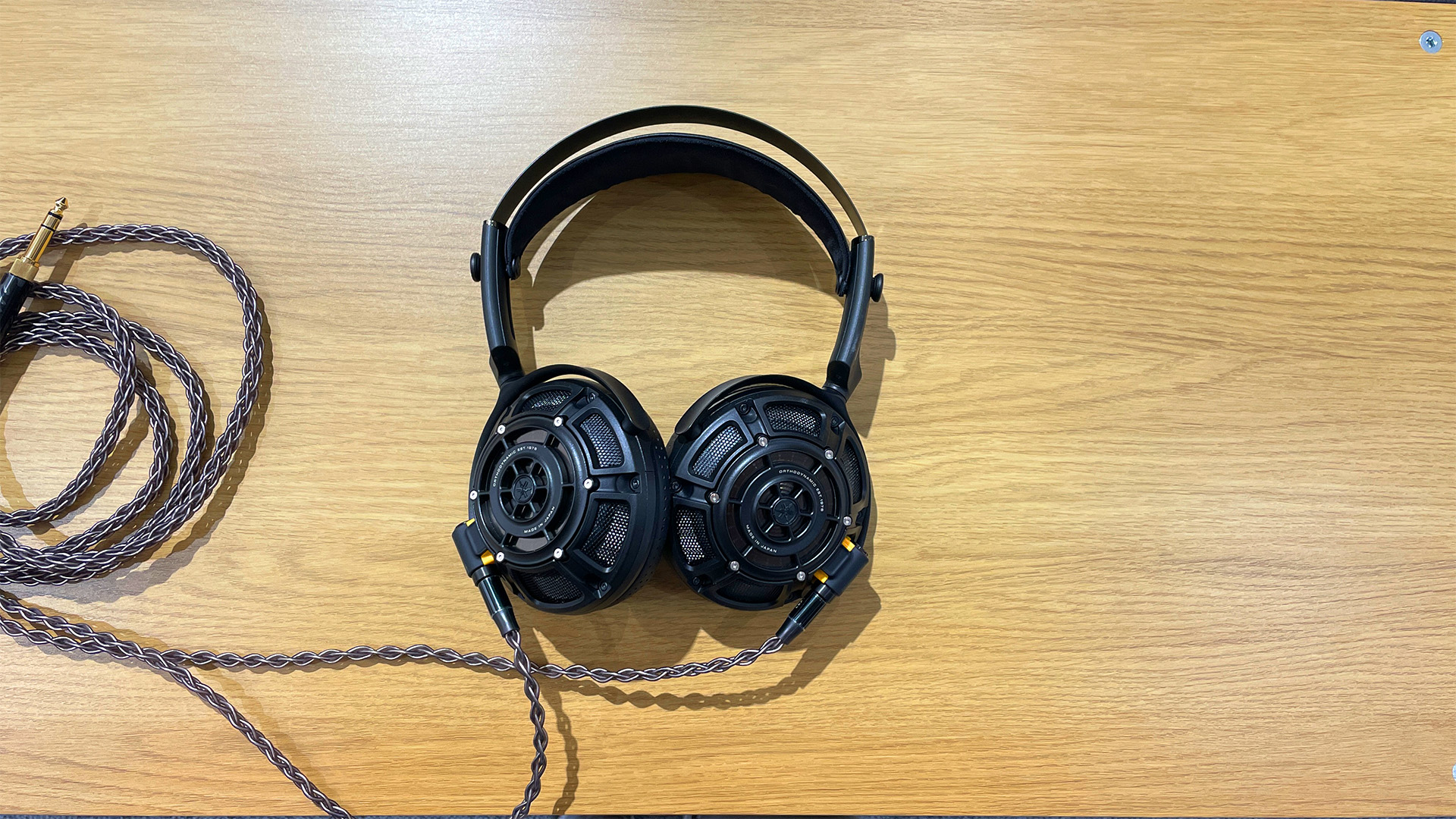


Specifications
Reasons to buy
Reasons to avoid
What with Yamaha's broad range of musical products, its headphones tend to get overlooked. The YH-5000SE are an attempt to change that; an ode a modern-day successor to the Japanese company's 1970s HP-1, which was the first pair to use its orthodynamic driver (an older term for what we now call a planar magnetic driver). These one-of-a-kind open-backed headphones are certainly built for audiophiles. And they're excellent.
They're made of lightweight materials – the earcup housing is made of magnesium, while the rest of the headphone’s structure uses a mix of steel, ABS, leather and aluminium – which combine with the soft leather (or suede – both are supplied) earpads to make for some of the most comfortable headphones we've ever worn.
The design is a little more functional than some of the 'wow' headphones you get at this price level, but that's fine by us. "These headphones feel beautifully engineered and are built with obvious care," penned our impressed reviewers in our YH-5000SE review.
Besides, what matters is performance, and fortunately that's exceptional. The YH-5000SE come close to equivalently priced Stax electrostatics when it comes to outright resolution and clarity, but in our opinion they deliver the sound with greater verve, which makes them a more enjoyable listen. "It is hard to think of an alternative that’s as insightful and balanced," noted our team – is there a greater compliment?
The one downside (apart from the price, of course) is that you'll need to buddy them with sufficiently high-end partnering kit, otherwise you won't hear them at their best. And that would be a crime. Yamaha would naturally point you to its HA-L7A headphone amplifier, which was tuned using the YH-5000SE, though they worked well during our testing with everything we tried, from our reference hi-fi system to a laptop connected to the Chord Hugo TT2 DAC/headphone amplifier.
If you want to audition some others before taking the plunge, take a trip to your nearest Focal dealer and ask to try the French brand's Utopia and Stellia models.
Read our full Yamaha YH-5000SE review
Best audiophile earbuds
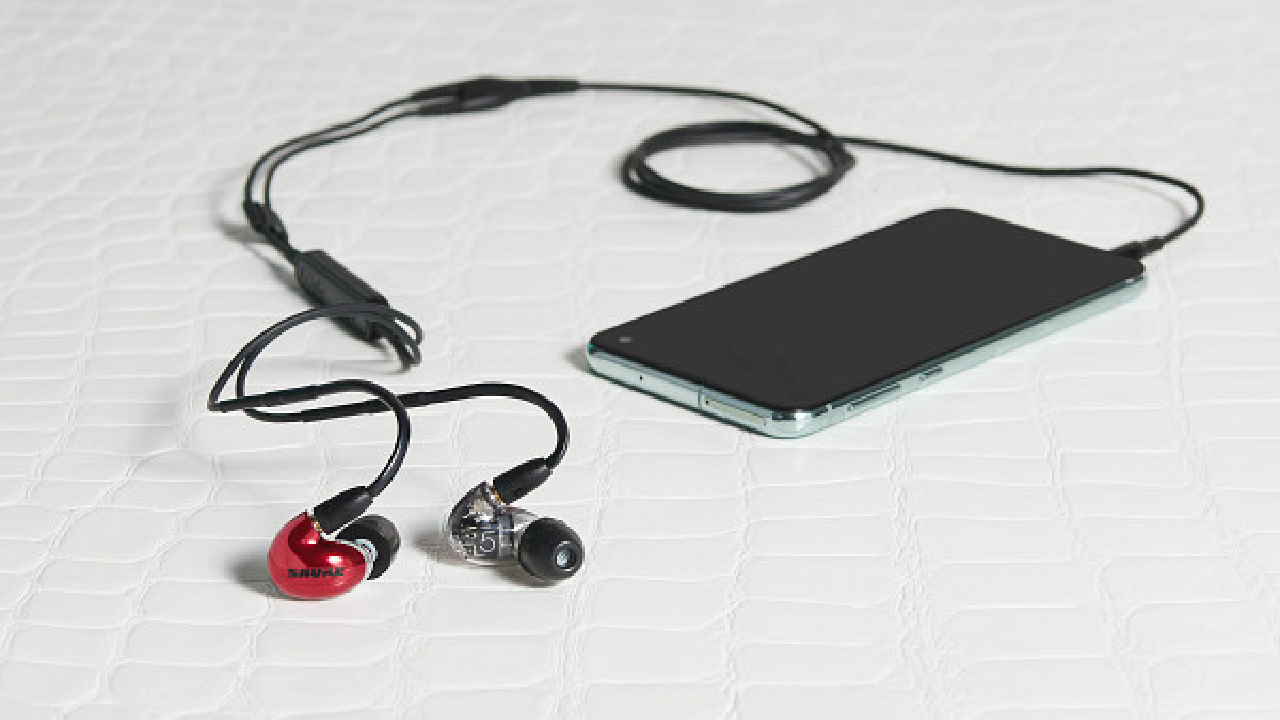
Specifications
Reasons to buy
Reasons to avoid
The Aonic 5 are the top in-ear model in Shure’s Aonic range. On paper, their design credentials look suitably impressive. They use three high-definition balanced armature drivers in a dual woofer and single tweeter configuration – and that's actually something you can spy for yourself thanks to the clear section of each earpiece acting as a window.
Each earpiece uses an MMCX connector to attach to the supplied headphone cable (which helpfully has an in-line remote), though they can also work as a wireless pair with Shure's true wireless secure fit adapter, which costs an extra £175 / $179 / AU$309.
While they will work with a phone (providing it has a 3.5mm headphone jack), to hear them at their best you really should feed them quality audio files from a quality source. Using a laptop and streaming in lossless CD quality? We’d seriously suggest using the Shures with a dedicated external DAC/headphone amp (like the AudioQuest DragonFly Red).
In addition to several pairs of different-sized ear tips are three pairs of nozzles that alter the balance of the sound produced by the earbuds. During our Aonic 5 review testing, our in-house team tried all three and landed on the 'Balanced' option for "the best balance of weight, agility, detail and refinement" – though as always with these kind of things it's worth experimenting for yourself.
Trust us, a good time awaits. "There’s a wonderful sense of clarity and they shower the listener with detail," reads our review. "They’re particularly talented with midrange information – vocals sound superb, rich in detail and natural expression."
If your budget doesn't quite stretch, however, be sure to check out the Shure Aonic 3, which are more affordable and, yes, inferior-sounding – but still class leaders at their price point, hence their current What Hi-Fi? Award.
Read the full Shure Aonic 5 review
Best high-end audiophile earbuds
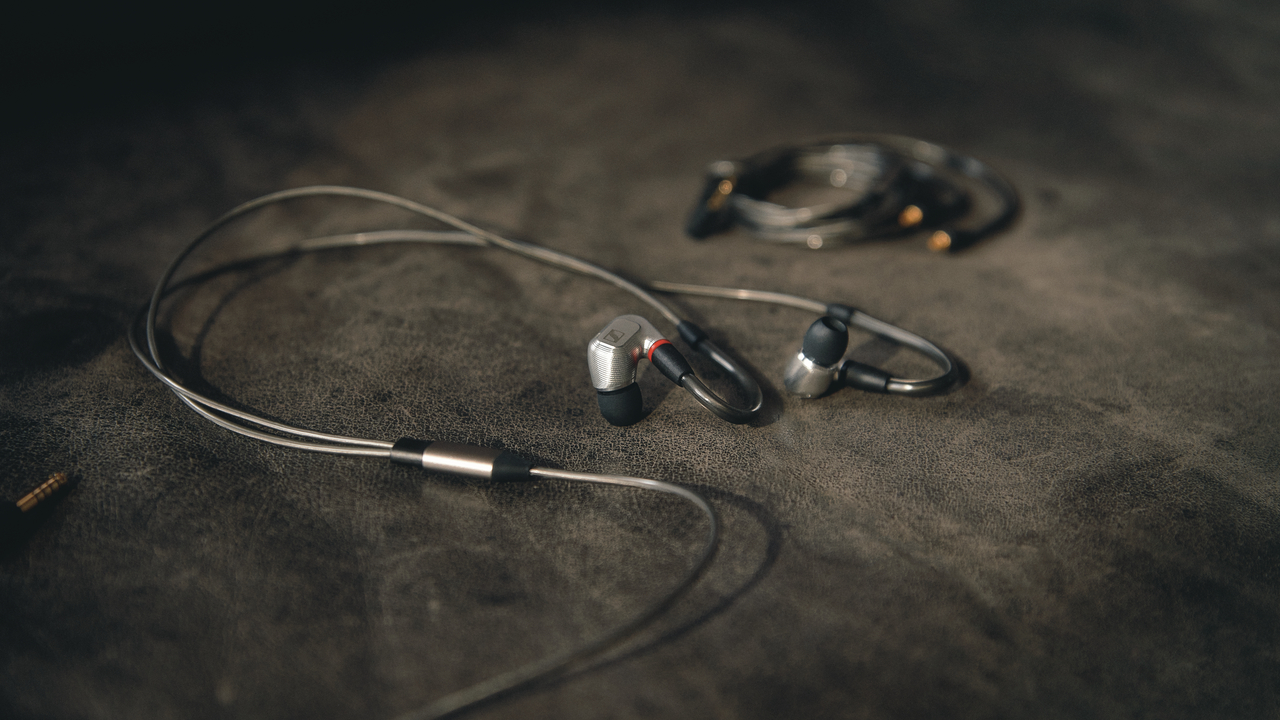
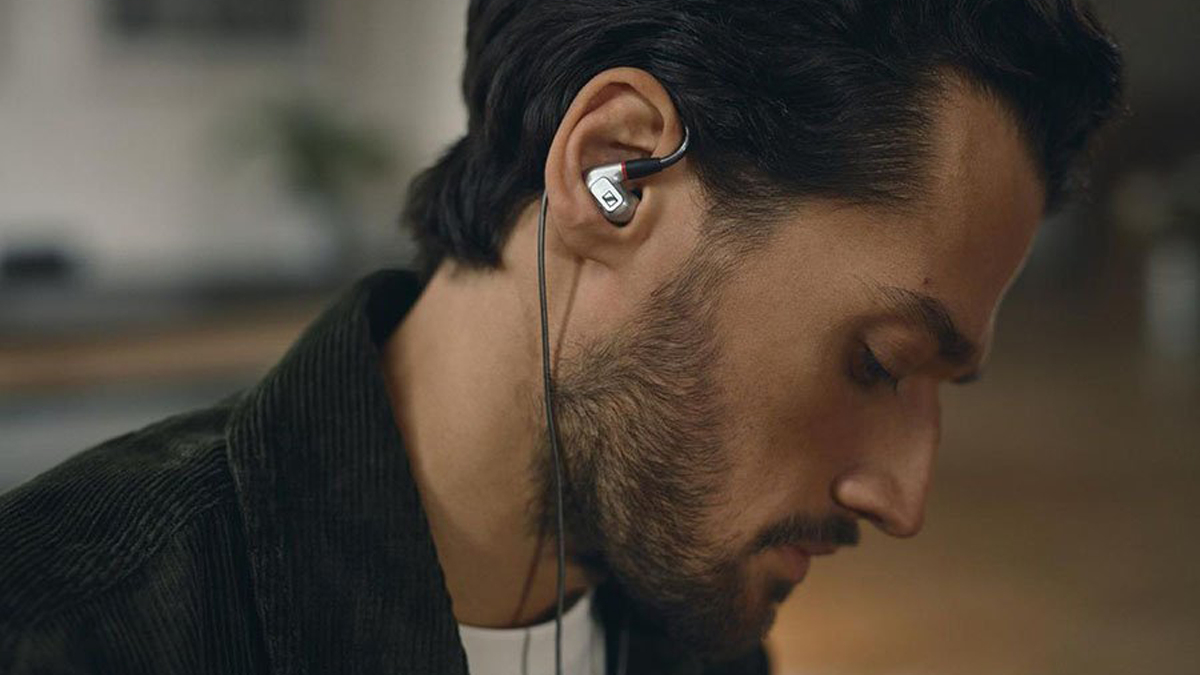
Specifications
Reasons to buy
Reasons to avoid
Sennheiser’s IE 900 will appeal to purists who want to get the best audio possible from a high-quality source, period. They put sound quality front and centre, so if that is paramount to you, then these wonderful IEMs are the way to go.
This is a suitably premium package befitting the best audiophile headphones, with six ear tip options and three cables with a choice of normal 3.5mm and balanced 2.5mm and 4.4mm connectors.
Sennheiser's engineers have chosen to go with a single driver rather than the more fashionable multiple-unit approach that many rivals take and it's made with rigidity and low resonance in mind. The results are fantastic.
They’re impressively revealing, clear and open-sounding, able to dig deep into the production of a recording – and highlight any shortcomings in it (or your partnering kit). "These Sennheisers capture the music’s energy superbly," notes our IE 900 review. "They sound confident and insightful, revealing layers of low-level information and organising it into a structured and cohesive whole." They strike a wonderful balance between over-analysing and having fun, too, and that goes a long way toward how entertaining they sound.
Partner them with a high-quality outboard DAC, such as the Chord Mojo, and use good-quality files and you'll hear just why the IE 900 justify their hefty price tag. Our reviewers' only complaint was that the signal cable is prone to transmitting any noise caused by movement – an issue if you want to wear these headphones on the move.
If you've got even more to spend, you might also want to consider Shure's KSE1200.
Read our full Sennheiser IE 900 review
Best wireless audiophile headphones
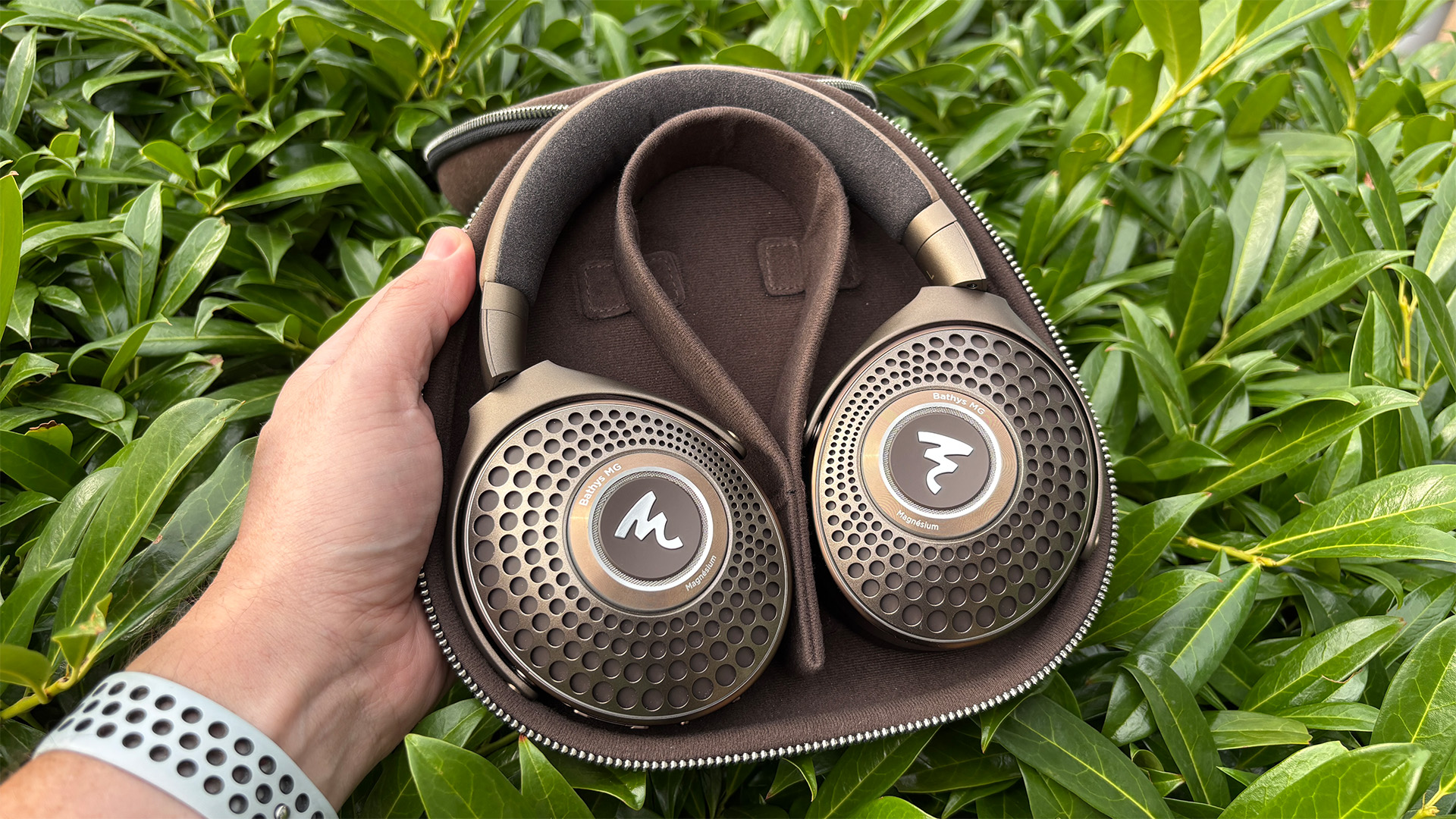
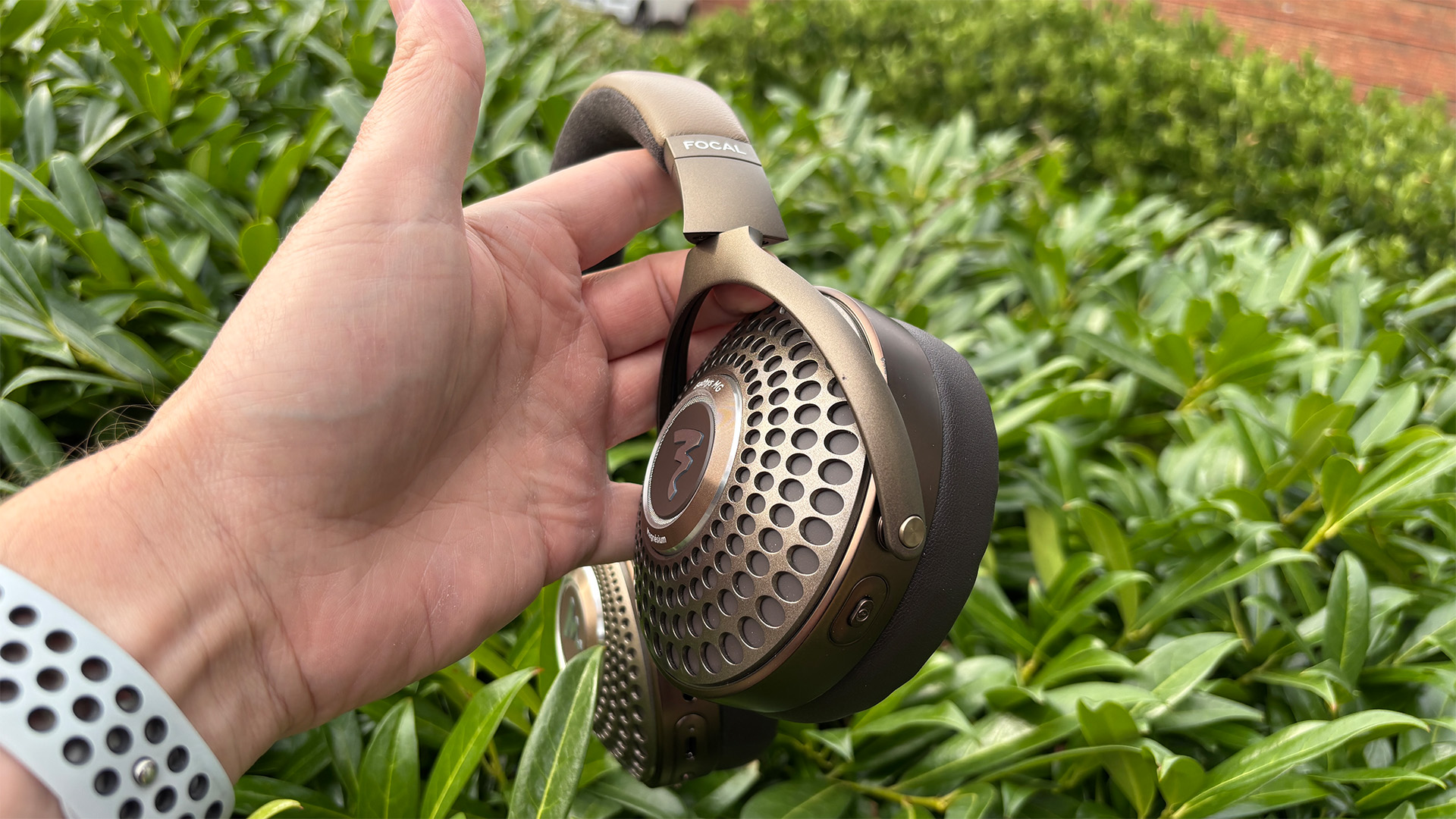
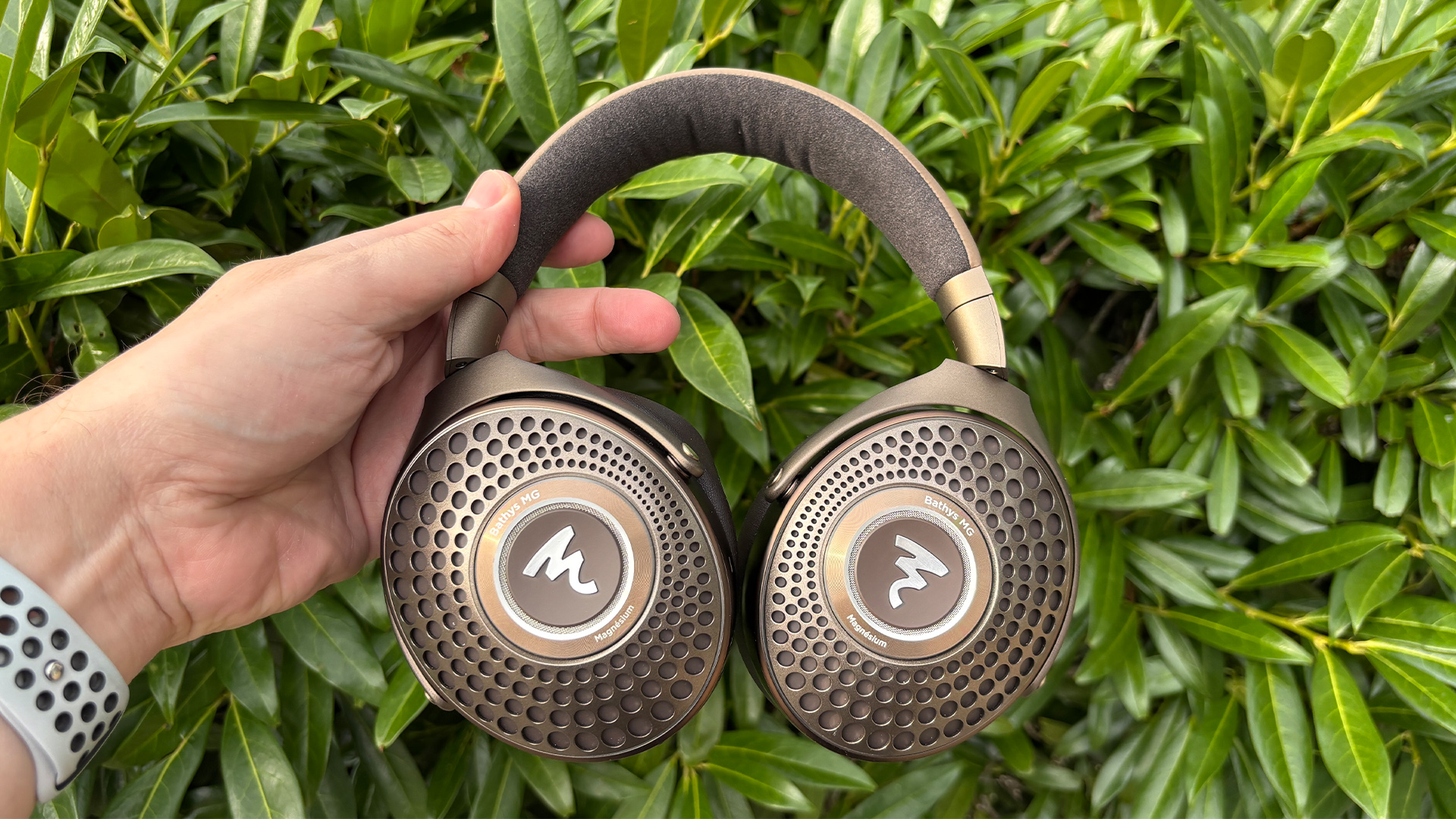
Specifications
Reasons to buy
Reasons to avoid
Focal picked up a five-star rating for its previous pair of wireless headphones, the five-star Focal Bathys, so when a fancier follow-up pair was announced, we knew they'd have big shoes to fill.
Happily, the Bathys Mg fill them and then some. The more costly cans swap the 40mm aluminium/magnesium driver for one made from pure magnesium, hence the 'Mg' moniker.
That makes a serious difference when compared with their 2022 predecessors, as the Mg offer "a greater sense of refinement, expression and more precise deployment of notes throughout the frequency range," as we wrote in our review. They also have a greater degree of control over lows and highs, outstripping the originals to a remarkable degree unwieldy.
The sound is natural and balanced, with plenty of weight, precision and texture. Levels of insight are off the chart, making flagship rivals from the likes of Sony, B&W and Dali sound lacklustre or hesitant by comparison.
The Focal Bathys Mg are suitably plush too, offering a durable build furnished with a leather headband and memory foam earpads, plus a yoke made from aluminium and magnesium. We admit that they're heavy – almost 100g heavier than the Sony WH-1000XM6 – and only come in the chestnut (i.e. brown) finish, so that won't be to everybody's tastes.
They also don't have touch controls, and their app is a little bare bones compared to some, but they only lack features in a bid to focus purely on performance. To us, it's a trade-off worth making considering how good the Bathys Mg sound.
They do have plenty of other features, anyway. The Sound Personalisation mode feeds you test signals to create your own sound profile based on your hearing. Wired listening is possible up to 24-bit/192kHz using the Mg's built-in DAC, so you can push the performance further if you want to go down the wired route.
The noise cancellation is also up there with the best around. Upper bass and lower midrange rumbles are dispatched with ease, while traffic noise is nicely muffled too, all of which will help you focus even more on the audiophile-grade sound quality.
If you have the money and you're set on wireless headphones, very little comes close to the Focal Bathys Mg.
Read our full Focal Bathys Mg review
Also consider
Looking for an alternative to the audiophile headphones above?
Below are models that come close to being included in this list but don't quite make the final cut. They are five-star performers that we think still deserve your consideration, especially if something on our list doesn't take your fancy. They might even be a better fit for certain people with certain demands or circumstances.
- Bowers & Wilkins Px7 S3: As more affordable alternatives to the wireless Dalis above, Bowers & Wilkins' premium Bluetooth noise-cancellers offer a more luxurious design alongside dynamic expression and detail that, while comparatively inferior, are highly competitive at their lower price point.
- Sony WH-1000XM6: Another more affordable wireless alternative is this brand-new Sony, which is on par with the B&Ws above from a sound quality perspective but blocks noise better.
- Dali IO-8: The IO-8 were our pick as the best wireless audiophile headphones, so if you want a more affordable alternative to the Bathys Mg, they remain a safe five-star bet.
- Grado RS1x: At many of the price points above are invariably Grado competitors that are just as good as the entry we've chosen. The RS1x are one example, massively transparent and musical open-back performers. If you don't mind their dated design, they're mighty strong alternatives to the Beyerdynamic T1 3rd Gen above.
- Austrian Audio The Composer: Austrian Audio is another manufacturer whose sound-first headphones have consistently impressed. Its latest, The Composer, is a worthy pick if you're serious about hearing as much detail in your music as possible but cannot stretch your budget to the aspirational Yamaha over-ears in our list.
- Austrian Audio Hi-X20: For tight budgets, these Austrian Audios are well-made headphones with a sparklingly clear sound that delves deep into your music’s finer details, delivering studio sound without requiring you to spend a fortune.
How to choose the best audiophile headphones
If you want the best sound quality possible for your budget, which seems likely considering you've landed on an audiophile headphones buying guide, you'll be best served by a pair of over-ear wired headphones. These prioritise performance and aren't held back by sound-limiting wireless functionality or other distracting, costly features such as active noise cancellation. If that's the case, you should read all about the differences between closed-back vs open-back headphones so that you can determine which of the two types available is best for you. In short, open-backs leak sound in and out and tend to sound more spacious and precise than traditional, non-leaky closed-backs.
If you do want to add modern-day convenience to the mix, you could opt for audiophile headphones that combine state-of-the-art noise-cancelling technology with state-of-the-art Bluetooth performance, like the Dalis in our list above. Just know that a class-leading pair of similarly priced wired headphones will trump even the best wireless models in the sound department. Our wired vs wireless headphones article outlines the pros and cons of each style.
So what else do you need to consider when buying audiophile headphones? If you're spending north of around £300 / $300 / AU$600 on a pair, we recommend you partner them with a high-quality source, such as a portable music player, or a quality headphone amplifier (whether that is one built into, say, a stereo amplifier or an external dedicated one) to extract the best performance from them. Want to primarily plug your pair into an (inherently poor-sounding) laptop? You should certainly consider connecting them to a decent DAC.
Also, keep in mind that over-ear audiophile headphones tend to be designed primarily for home listening; neither only a 3m supplied cable nor an open-back design is ideal for the train or open-plan office.
Or perhaps you want the best in-ear audiophile headphones (sometimes referred to as IEMs or in-ear monitors), in which case you can expect a discreet design and a performance that majors on clarity, directness, precision and musicality, with little in the way of features – many don't even have an in-line remote for answering calls. Again, wired earbuds will sound significantly better than wireless earbuds that cost a similar amount.
How we test audiophile headphones
With over 150 years of collective testing experience, What Hi-Fi?'s in-house reviews team tests over 100 pairs of headphones every year, many of which are what we would call 'everyday' wireless headphones but also plenty that are worthy of the 'audiophile' label.
We have state-of-the-art testing facilities where our expert reviewers carry out all our product testing, giving us complete control of the environment and partnering equipment these tests are conducted in and with.
We test audiophile headphones with various source equipment – from laptops connected to USB DACs to our reference hi-fi system – depending on their price point and form factor, to see how they work in their most likely real-world set-ups.
Each pair is given plenty of running in and testing time, with various music genres and recording quality making up our test tracks. Importantly, we compare each audiophile headphone under review with the current class leader(s) at their price point – often a What Hi-Fi? Award winner – to ensure we can contextually place its talents within the market.
In line with how we test and review all products at What Hi-Fi?, the star rating we award each pair of audiophile headphones is agreed upon by several team members rather than simply an individual reviewer, helping to ensure consistency and avoid any personal preference.
From all our reviews, we only choose the very best products to feature in our Best Buys, like this one. That's why if you take the plunge and buy any of the audiophile headphones recommended above, or something else on another Best Buy, you can be assured you're getting a best-in-class, What Hi-Fi?-approved product.
Read more about how we test and review headphones at What Hi-Fi?
Audiophile headphones FAQ
What are audiophile headphones?
Headphones referred to as 'audiophile headphones' are generally those that prioritise sound quality over excessive styling or additional features such as active noise cancellation (ANC) and wireless connectivity (though our list above does include one exceptional-sounding Bluetooth pair for those who are happy sacrificing a little sound quality for the convenience of cable-free listening).
Such audiophile headphones put music first and, due to their sonic calibre, generally warrant being connected to similarly sophisticated source devices that will make the most of them. These include portable music players, hi-fi components with built-in headphone amplifiers, or laptops and phones connected to an external DAC.
Are audiophile headphones good for gaming?
Audiophile headphones have a few good gaming headphone traits. Firstly, they tend to be wired, so they can directly connect to your console or controller. Secondly, they generally sound significantly better than dedicated gaming headsets, putting sound quality first and combining neutral tonality with an open soundstage.
However, they don't typically integrate a microphone, which is pretty essential for online gaming, nor do they have adjustments for bass levels or surround sound modes.
Why are audiophile headphones so expensive?
When you think of audiophile headphones, you might think of those with four (or five) figure price tags – the very best-sounding available that benefit from expensive drivers and components, as well as the luxury design materials one might expect at the higher end of the market. This list offers many examples of them above. But affordable headphones worthy of the 'audiophile' label exist, too, due to their performance-first ethos and the fact they can also justify being connected to a sophisticated music source.
Recent updates
- September 2025: The Beyerdynamic DT 990 Pro X are our pick as the best headphones for comfort, while the Focal Bathys Mg replace the Dali IO-8 as our favourite luxury wireless cans. The IO-8, meanwhile, drop to our also consider section.
- March 2025: The Dali IO-8 are our new best audiophile wireless pick, replacing the veteran Mark Levinson No. 5909. Meanwhile, the brand-new Sennheiser HD 505 wired mid-range over-ears just miss out, lacking the rhythmic ability to trouble the Beyerdynamic DT 700 Pro X below.
- January 2025: The CES 2025 show didn't deliver anything of note in the audiophile headphones market, but just before Christmas Meze and Final launched wired over-ears, which we hope to hear soon. For now, our list remains unchanged going into 2025.
- November 2024: Our 'Best Value' Grado SR325x pick has just won its fourth consecutive What Hi-Fi? Award so is now labelled as such. Despite testing several pairs during our Awards season judging, nothing troubled the class leaders on this list.
- August 2024: No new entries this time. Since our last update in June, we've tested two pairs that, on paper, fit the audiophile profile. The budget, wired Sivga SV021 Robin over-ears seemed promising but ultimately lack refinement and authority. And the ambitiously priced wireless Dyson OnTrac proved disappointing too, lacking the sonic talents of their best wireless headphone competitors.
- June 2024: The wireless Mark Levinson No. 5909 replaced the Sony WH-1000XM5 in light of a recent price drop, making the superior-sounding over-ears better value. We also added FAQs to offer you extra buying advice.
- April 2024: We added an 'Also Consider' section above to give you further choice if nothing in our handpicked list suits your requirements.
- February 2024: We broke down picks into price- and design-related categories to help you more easily find a pair that's right for your priorities and budget.
- November 2023: We labelled headphones on this list that had recently won a What Hi-Fi? Award 2023, such as the Grado SR325x. This label indicates a class leader.
Today's best deals
The latest hi-fi, home cinema and tech news, reviews, buying advice and deals, direct to your inbox.

Becky is a hi-fi, AV and technology journalist, formerly the Managing Editor at What Hi-Fi? and Editor of Australian Hi-Fi and Audio Esoterica magazines. With over twelve years of journalism experience in the hi-fi industry, she has reviewed all manner of audio gear, from budget amplifiers to high-end speakers, and particularly specialises in headphones and head-fi devices.
In her spare time, Becky can often be found running, watching Liverpool FC and horror movies, and hunting for gluten-free cake.
- Harry McKerrellSenior staff writer
